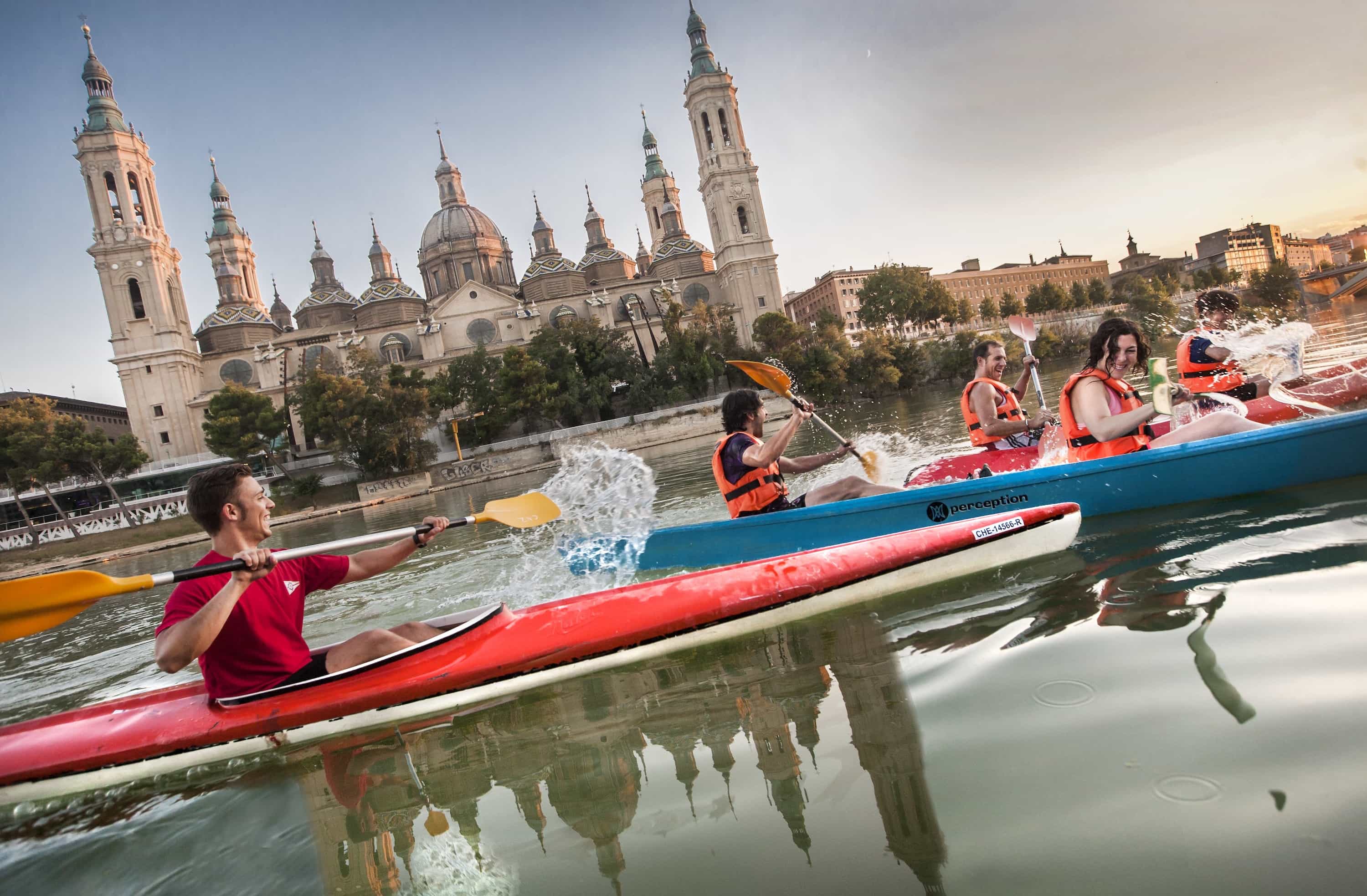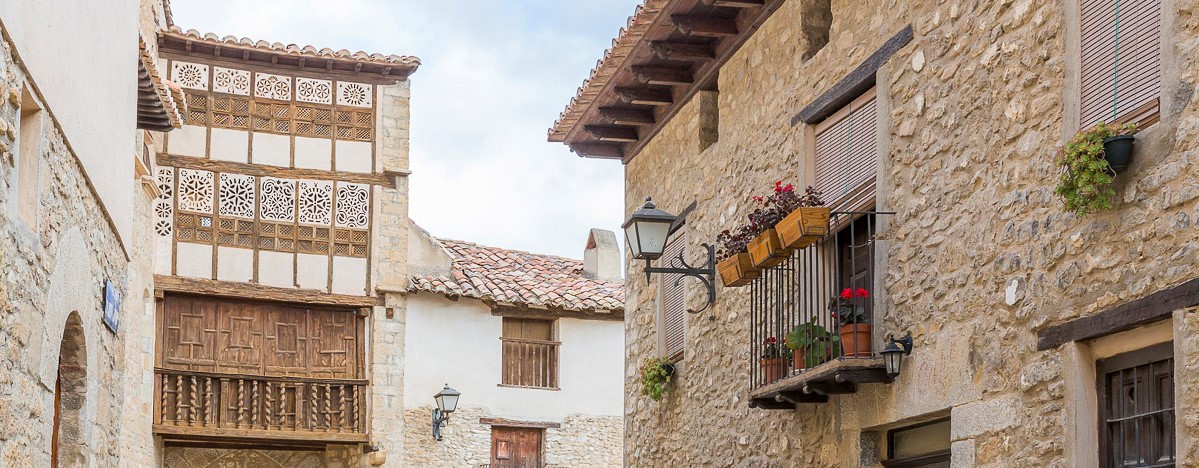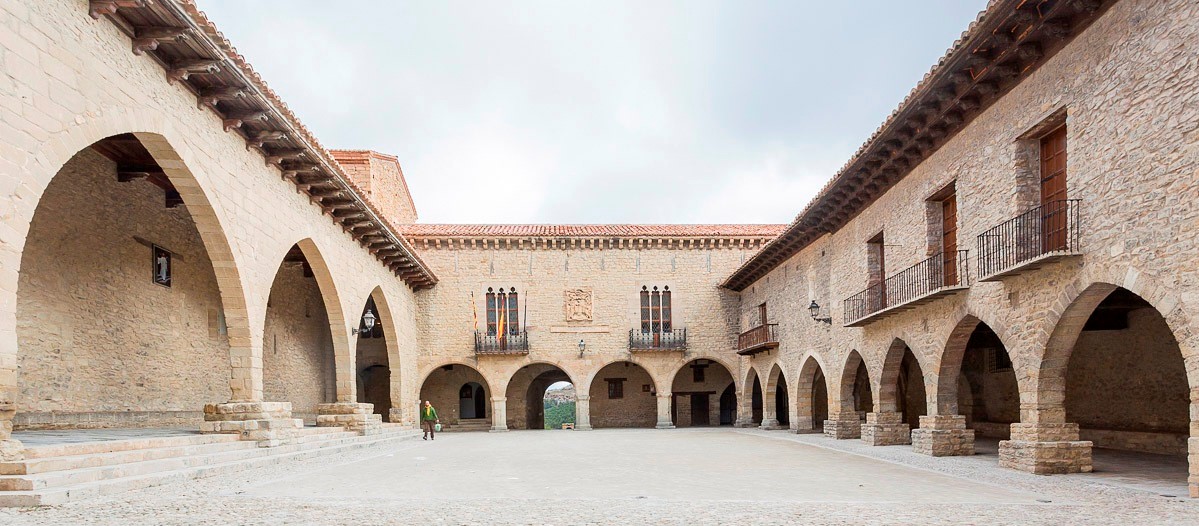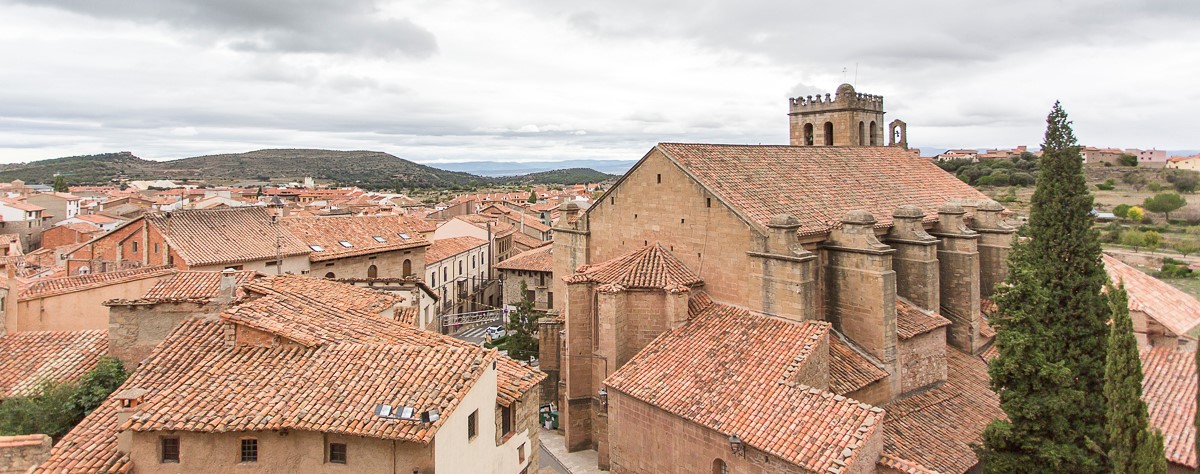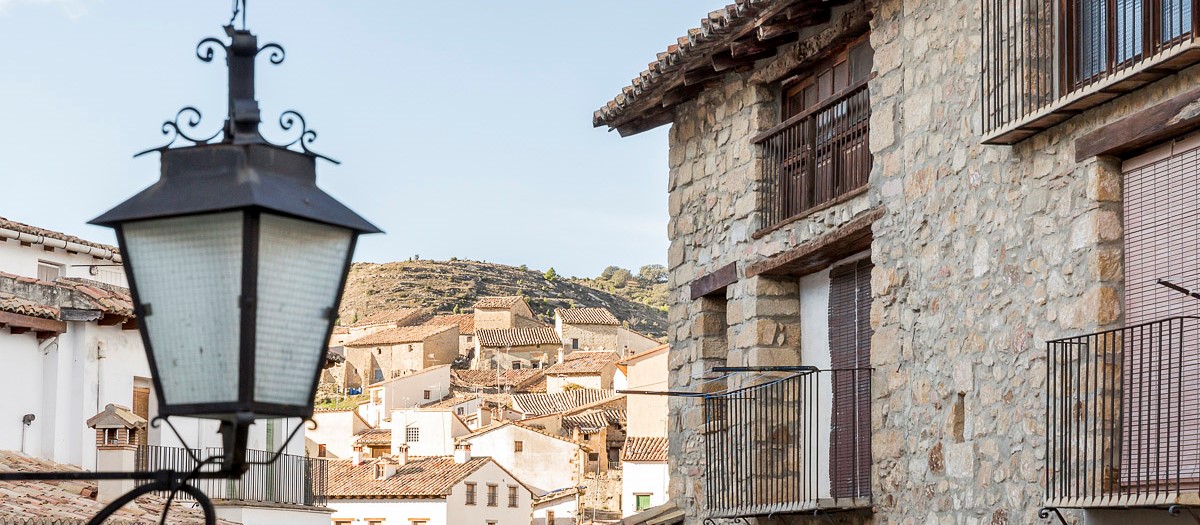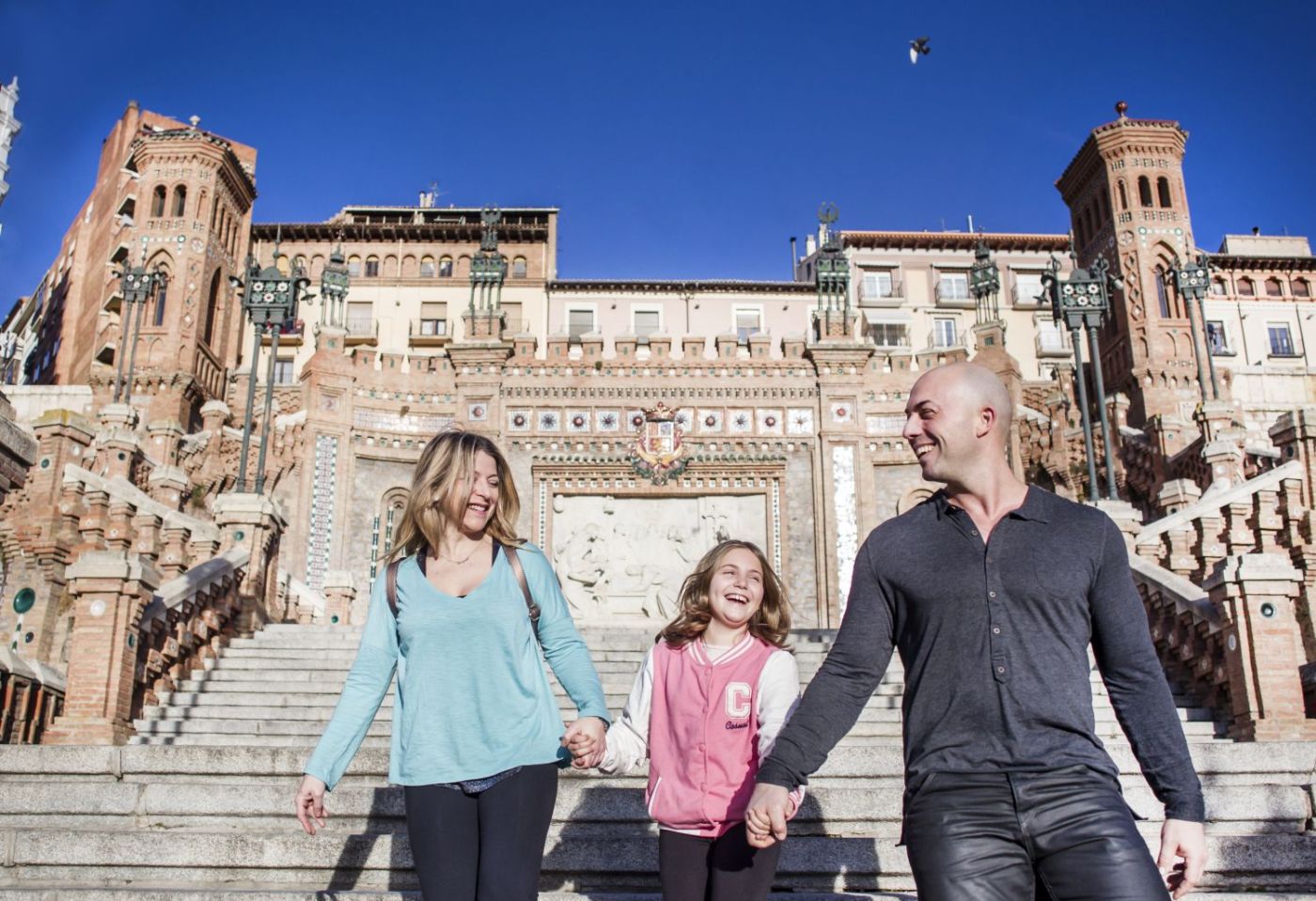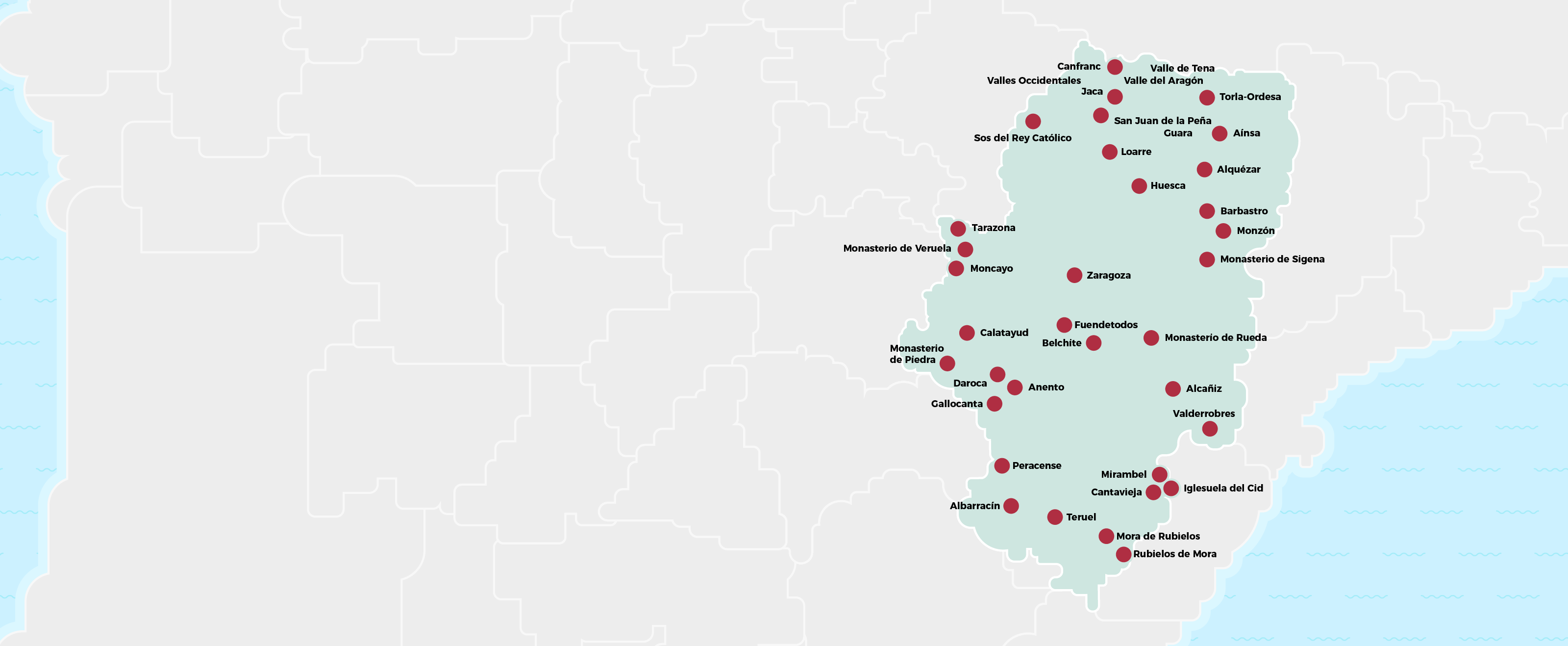
Aragón in 15 days
Also available Aragón in 7 days
15 days to immerse yourself in cultural wealth and exuberant nature, discover its friendly people or taste its gastronomy.
- Locations to visit in two weeks
- 20
- Kilometers for unforgettable landscapes
- 1826
- National Heritage Monuments
- 10
Day 1 Zaragoza and its historic center
Crucible of cultures, crossroads of roads, capital of Aragon. This is Zaragoza. Romans, Jews, Muslims and Christians have left, over more than 2000 years, a spectacular legacy to which you will have to dedicate at least two days.
On the banks of the Ebro rises the largest Marian temple of Christianity. The unmistakable silhouette of the Basílica del Pilar welcomes us and welcomes us to one of the largest squares in Europe. In the same square, the imposing Cathedral of the Savior, La Seo, will attract your attention, it is a mosaic of artistic styles that captivates inside and outside.
In its surroundings, stroll through the streets of the old town and discover the Caesaraugusta museum route, the Goya Museum, the Renaissance Market, the Stone Bridge, stately mansions and Mudejar examples everywhere. Do not forget to taste the local cuisine in "El Tubo" and rest on the other side of the Ebro in the Balcón de San Lázaro, observing a picture postcard.
A day has already passed, but there is still night and the city proposes a varied cultural offer in theaters, cinemas, bars ... After that, you may have to retire to assimilate the experience and gather strength.
Day 2 Zaragoza, there is still more
You will have to leave the Roman domains and cross its wall to get to where the Muslims erected in the eleventh century the Palace of the Aljafería, the peak of Hispano-Muslim art, home, today, of the Cortes of Aragon.
Stroll through the José Antonio Labordeta Park, its fountains and gardens mark the main promenade, retrace it from below or ascend the monumental staircase, and share the view with Alfonso I El Batallador.
Save time to visit the rooms of the Museum of Zaragoza, a walk through history, or the modern IAACC Pablo Serrano, to admire the legacy of the 2008 International Water Exhibition, to relax in a small terrace or to go shopping ... Zaragoza has everything.
Day 3 Monasterio de Piedra, Calatayud and Daroca
Escape in one day to visit Calatayud and one of the most known enclaves of Aragon: the Monastery of Piedra. A tourist complex that includes the Cistercian monastery of more than 8 centuries of history and a beautiful natural park where you can walk for at least three hours among caves, lakes and waterfalls.
A few kilometers away, the monumental town of Daroca opens the doors of its walls to present an historic urban layout. Recall it from the High door to the Lower Door of the wall, without forgetting to visit the Collegiate Church of Santa María and to be interested in the legend of the Corporales. From the top of its imposing fortification, you will see the privileged heritage that still conserves and reminds us of its medieval splendor.
If time allows you to expand your route, Anento will be the ideal option. Declared one of the most beautiful villages in Spain, it will surprise you, especially the Aguallueve, a spring from which water flows permanently.
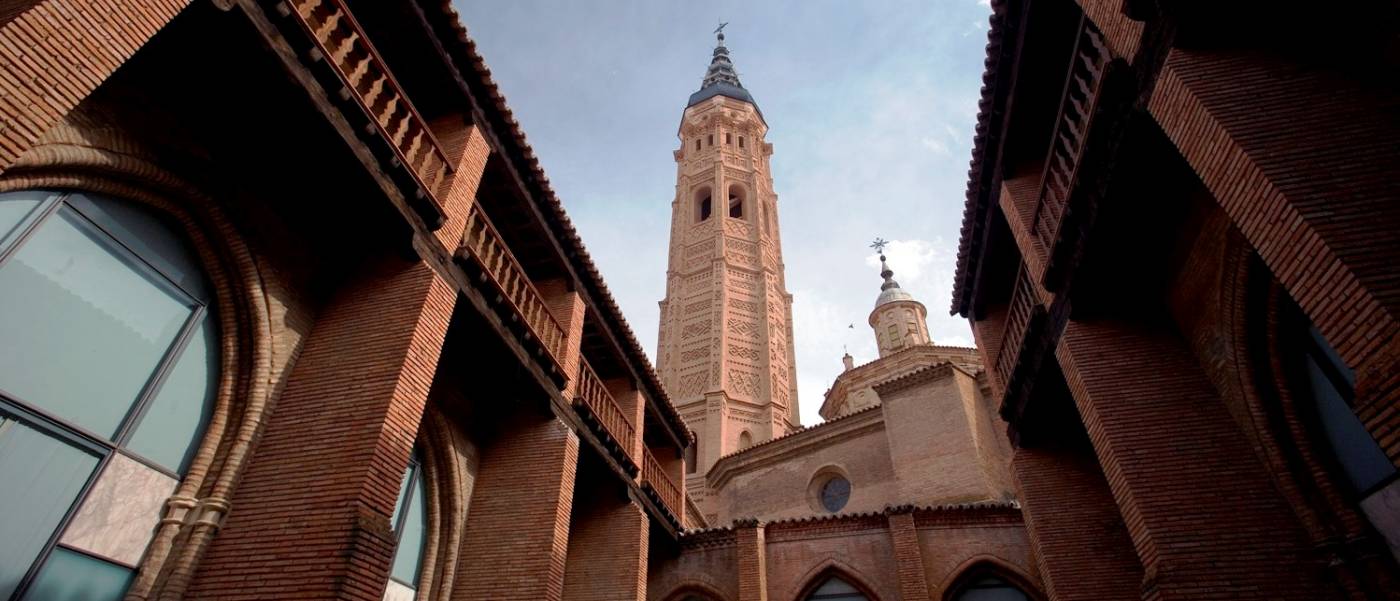
Calatayud
The fourth largest town in Aragón, in the middle of a fertile garden and orchard area, it has a privileged…
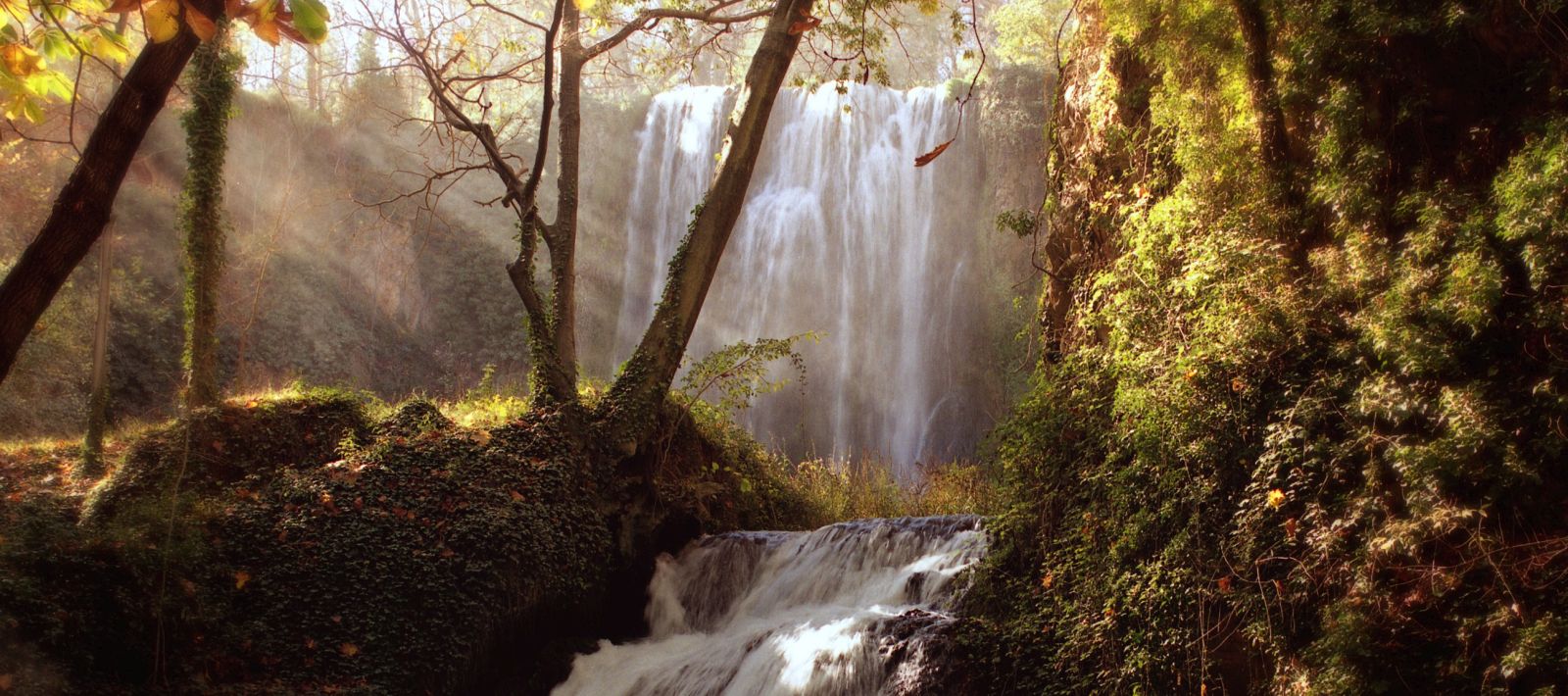
Monastery of Piedra
While flowing down, Piedra river forms across Nuévalos a natural scenery around a monastery founded by Cistercian monks in 12th…
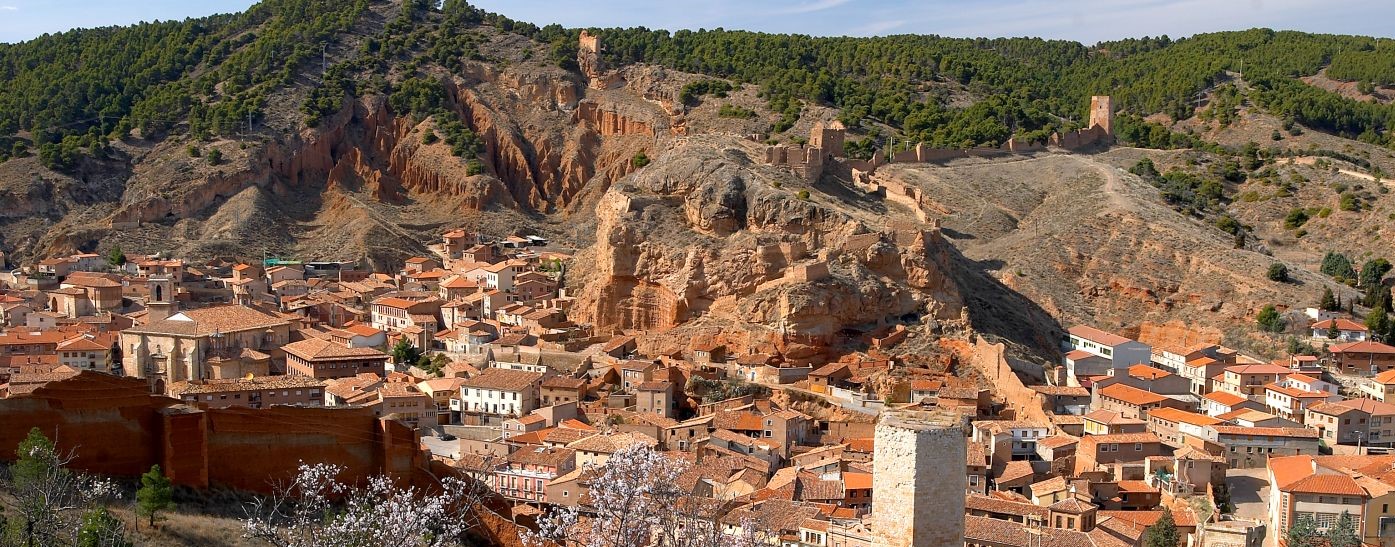
Daroca
Watched by the remains of an ancient castle, Daroca stands up, one of the most beautiful towns in Aragón
Day 4 Tarazona, monastery of Veruela and the Moncayo
Only 90 kilometers separate you from Tarazona of its splendid cathedral of Santa María de la Huerta, its peculiar bullring, the magnificent facade of its town hall and its Moorish and Jewish neighborhoods. Head towards the Moncayo, guided by its summit, perhaps snowy, where the wind that cleans the Ebro Valley is generated. Appreciate its fauna and flora by choosing any of the marked trails that run through it. And on the slopes of Moncayo, the Monastery of Veruela, built in the 12th century by the Cistercian Order and the abode of illustrious writers, its walls keep secrets that we invite you to decipher.
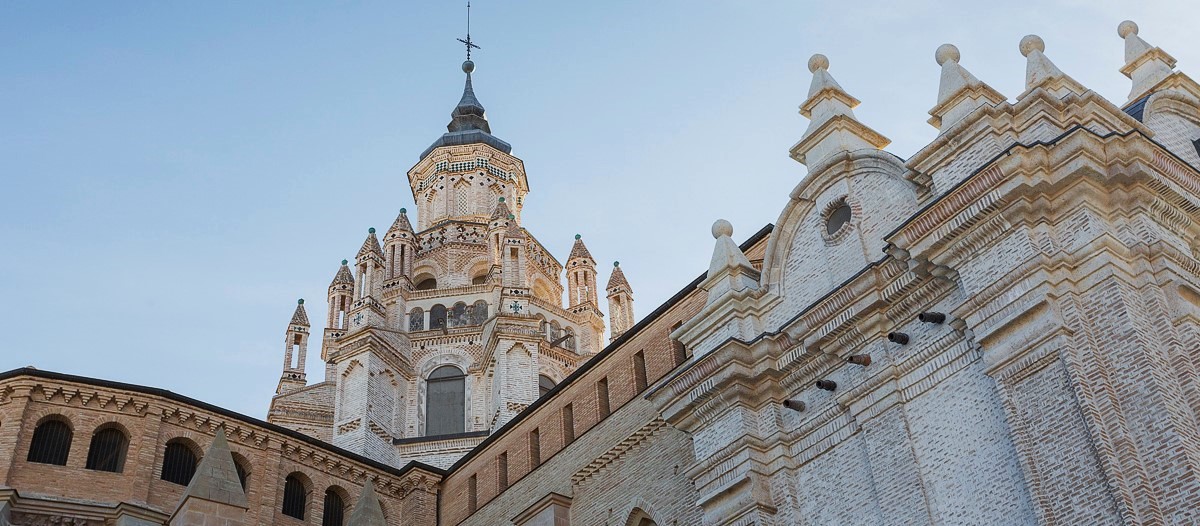
Tarazona
Apart from home place to Singer Raquel Meller and comediant Paco Martínez Soria, Tarazona can show off a long list…
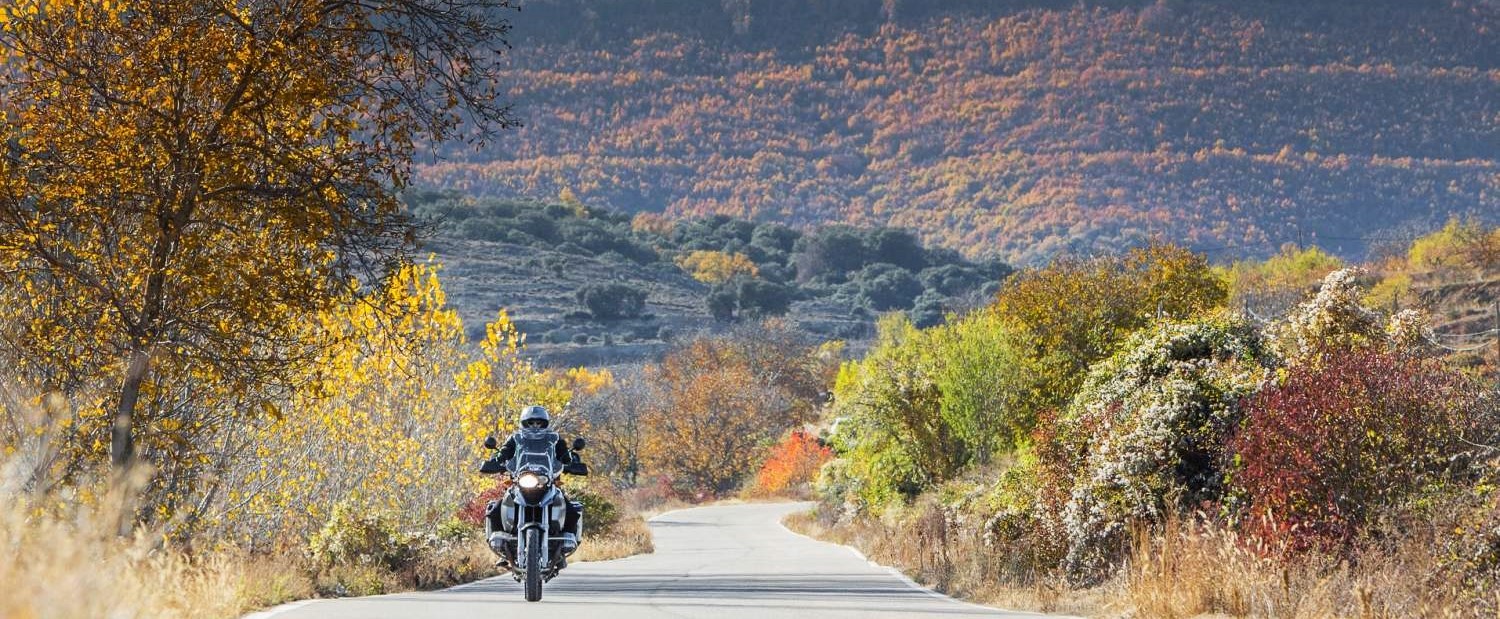
Moncayo Natural Park
Moncayo Natural Park spreads throughout 11,000hectares. Its height and isolation have provided it an outstanding vegetal variety and being so…
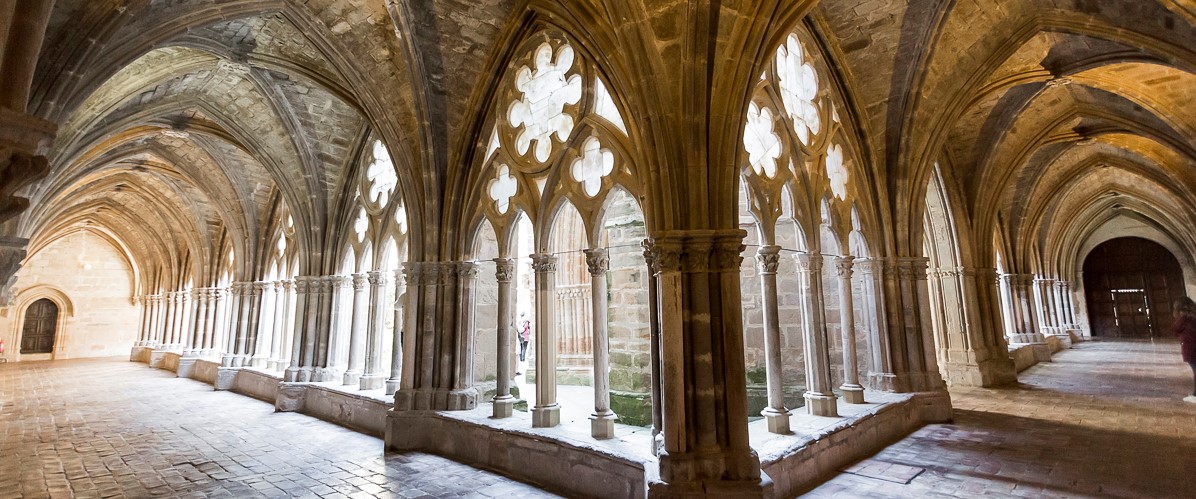
Monastery of Veruela
Cistercian Order arrival in Aragón enhanced the region with new spiritual and cultural values, as well as political and economic
Day 5 Huesca, Loarre and San Juan de la Peña
It's time to say goodbye to the capital of the Ebro and continue heading north to discover the legendary city of Huesca. Strolling through its historic center we discover important monuments such as its Gothic Cathedral, the Church and the Cloister of San Pedro el Viejo, the Huesca Museum or the Basilica of San Lorenzo, patron saint of the city.
We head northwest crossing the Hoya de Huesca to reach the Castle of Loarre, one of the best preserved medieval fortresses in Aragon and is considered one of the most beautiful and perfect buildings of the European Romanesque. Peering into its towers or any of its arrows, a movie set opens before our eyes.
But we are still going to make the most of the day by visiting the Royal Monastery of Juan de la Peña, which we will reach after crossing the winding road that crosses the Kingdom of Mallos and leads us to the Pyrenees. Witness of the origins of the Kingdom of Aragon, pantheon of Kings and important religious and political center in the eleventh century, it gets its name from its peculiar location in a spot between rocks. A few kilometers away is Santa Cruz de la Serós.
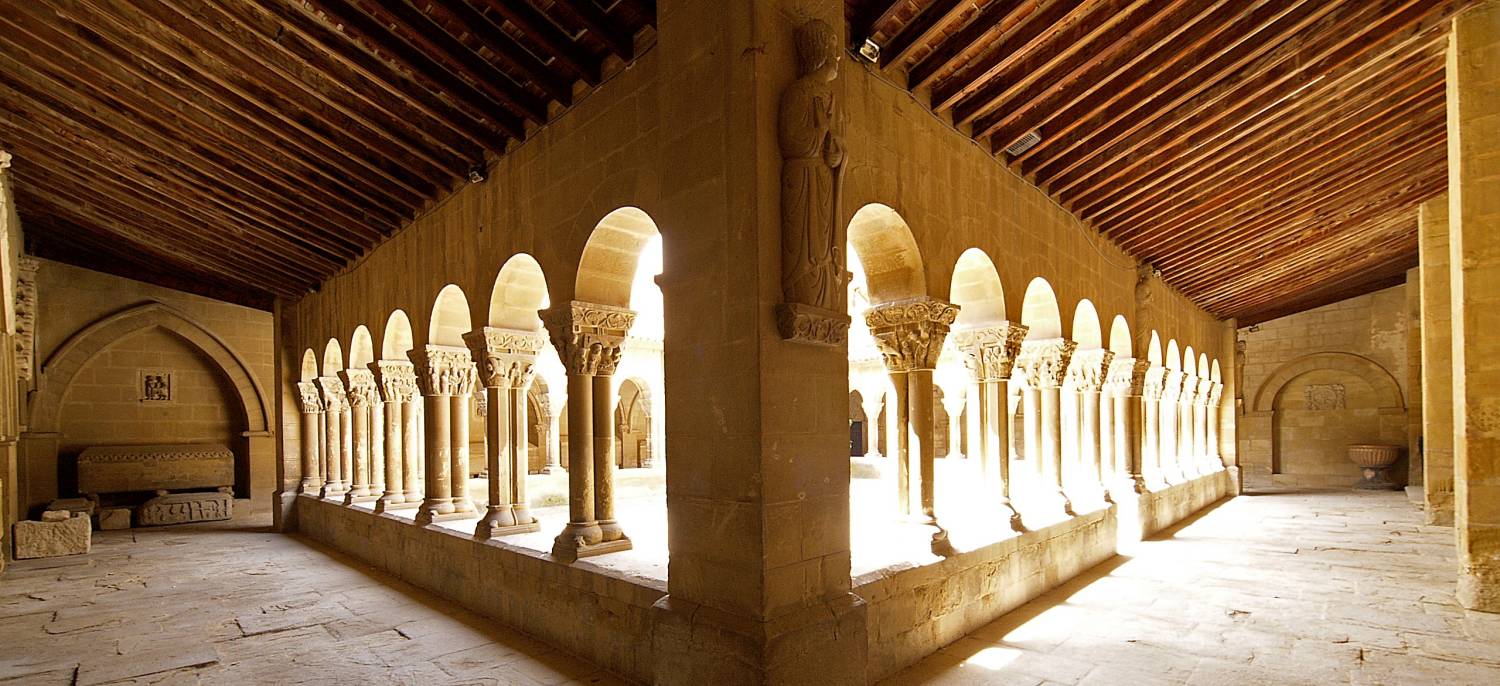
Huesca
It is the best place for promenades, slow living and kind people. Walk along the old town as much as…
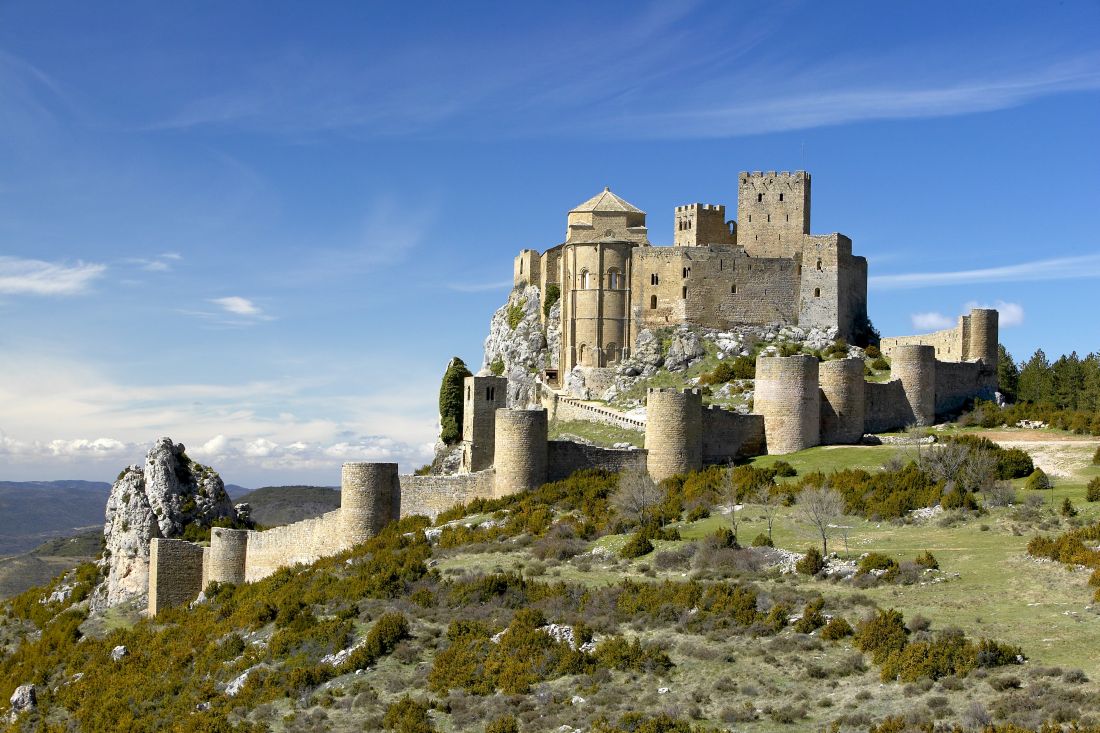
Castle of Loarre
The astonishing wall around it and the eleven towers will welcome you. Built during the 11th century, it was first…
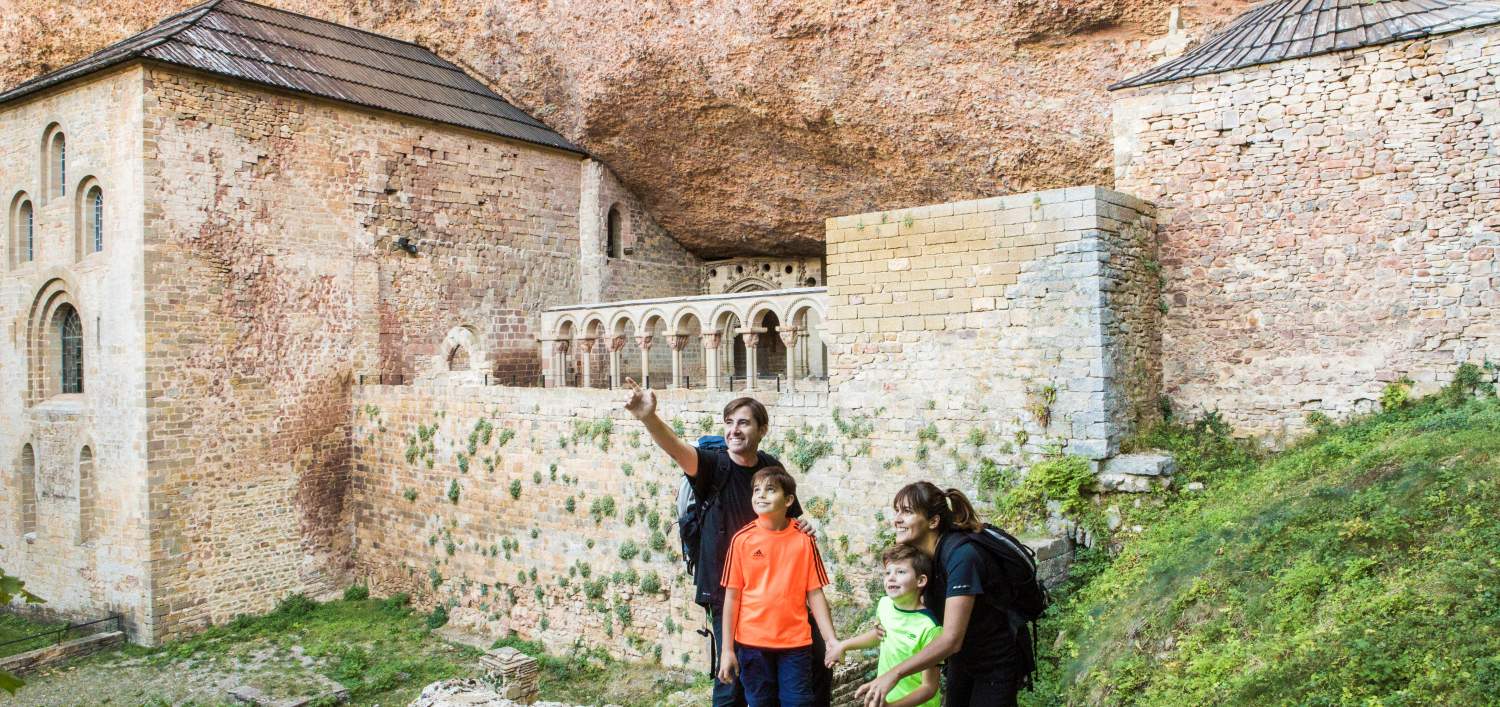
Monastery San Juan de la Peña
Cradle to the Kingdom of Aragón and origin of misterious legends. San Juan de la Peña monastery, built under a…
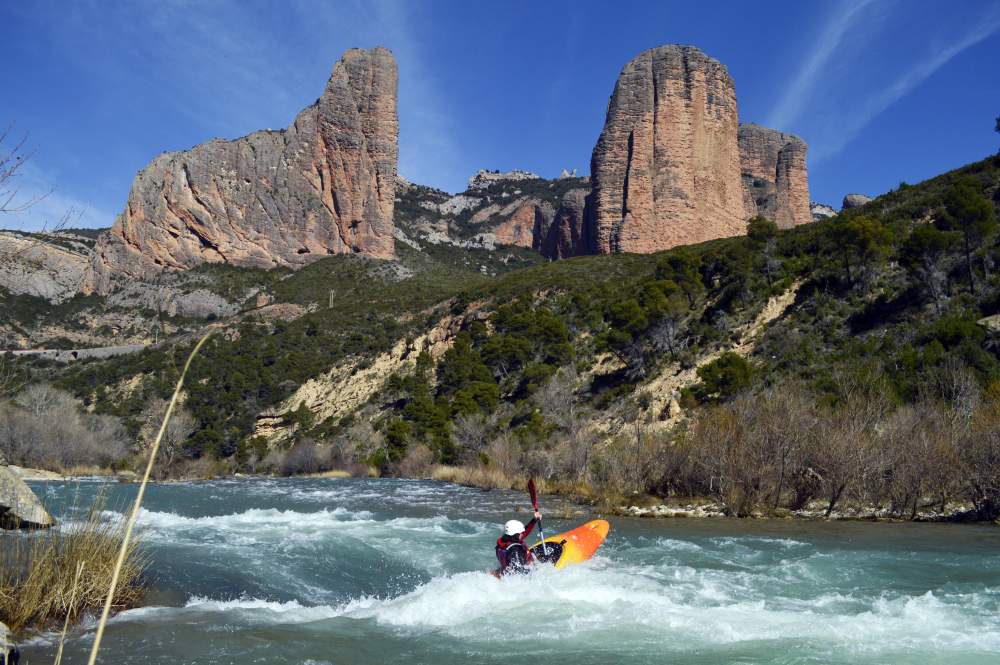
Kingdom of ‘los Mallos’
A medieval castle fit for movies. White water rivers, a Paradise for climbers. And really tasty cakes
Day 6 Jaca, valley of Aragón and Canfranc
We start the route in Jaca, in the Aragonese Pyrenees, whose urban center is dominated by the silhouette of the Citadel. A defensive fortress of pentagonal plant surrounded by gardens that, together with the Cathedral, centers the tourist activity. The Cathedral of San Pedro, jewel of the Spanish Romanesque, is a key piece of the Camino de Santiago in Aragon.
If we go back this way of pilgrimage through the Valley of Aragon, we arrived almost on the border with France, which was the largest railway station in Spain; the imposing and historic Canfranc International Railway Station.
In the winter season, you can take advantage of the skiing at the Astún and Candanchú ski resorts.
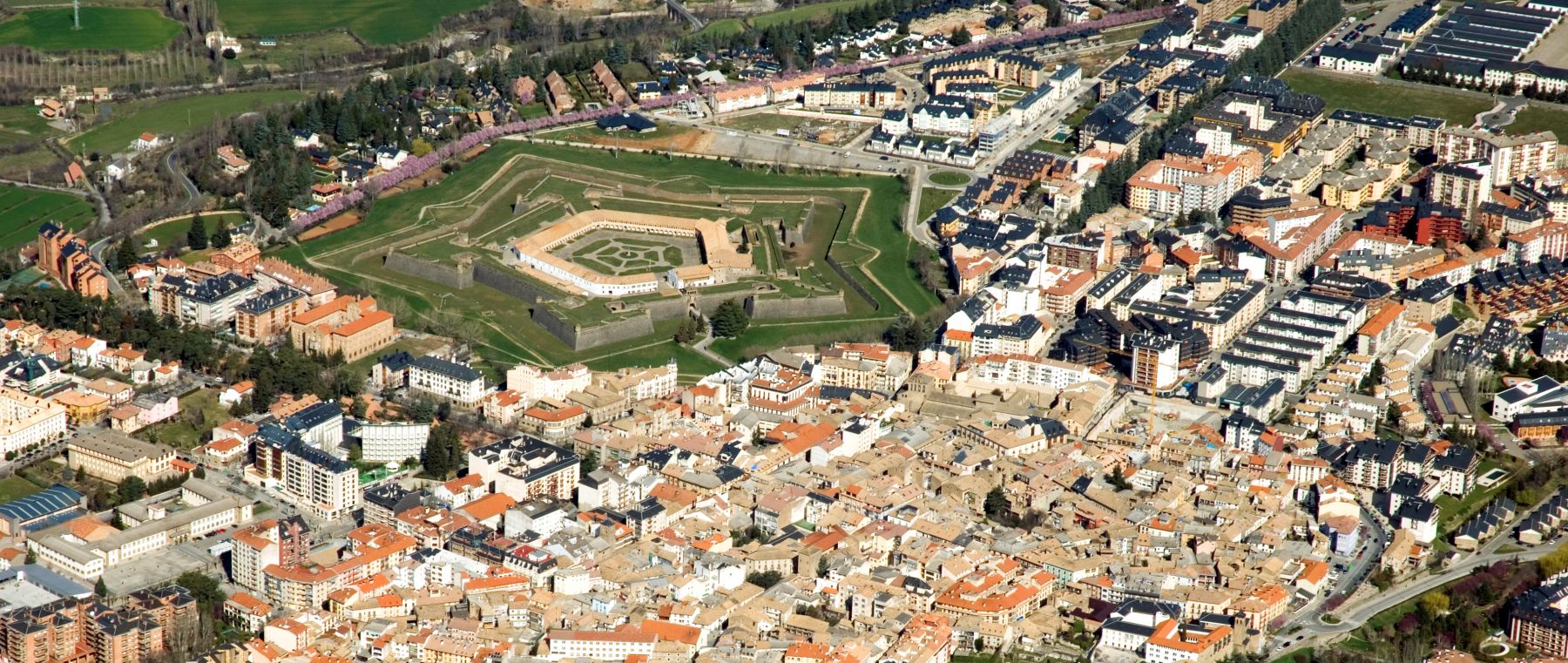
Jaca
It is vivacious joining together modernity, tradition, history, wonderful landscapes and a unique cultural heritage
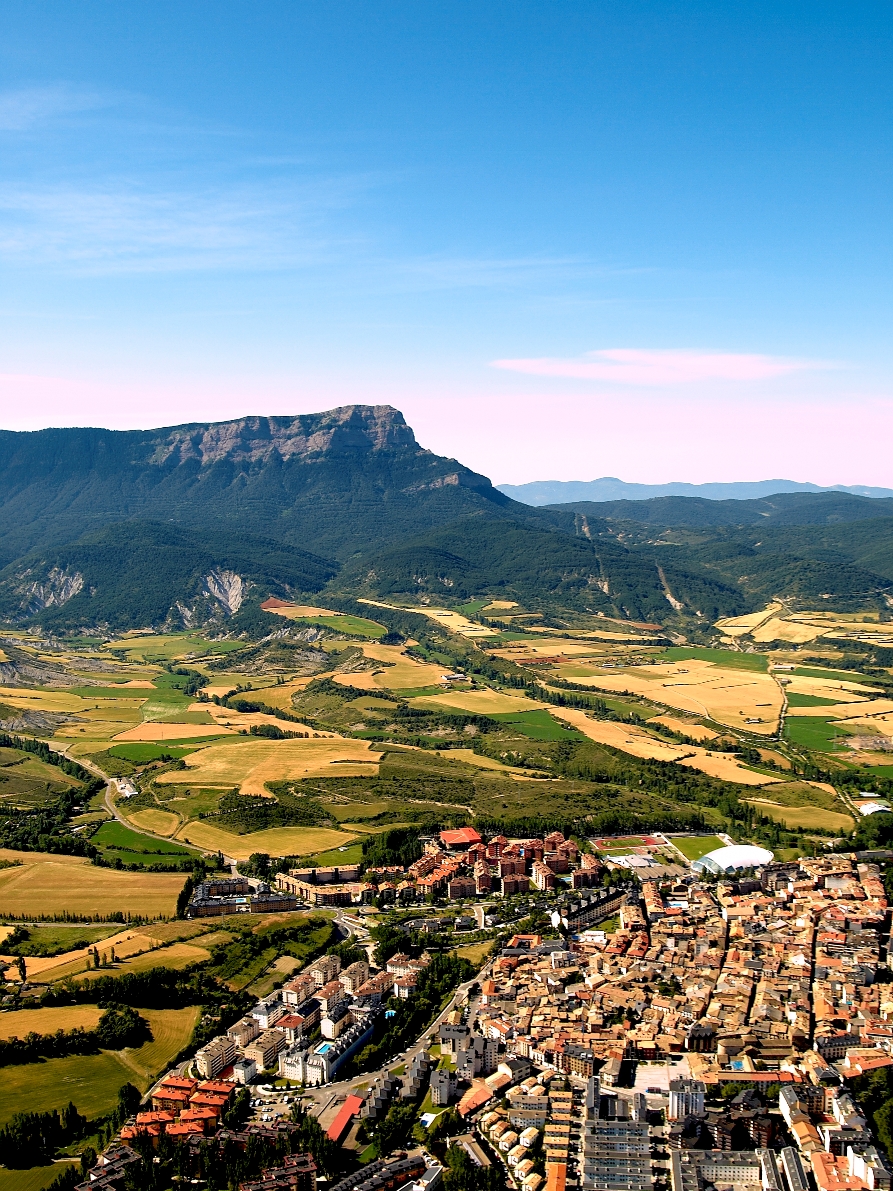
River Aragón valley
From the highest peaks to the vivacious town of Jaca, the valley shows generosity in natural spaces, sport activities and…
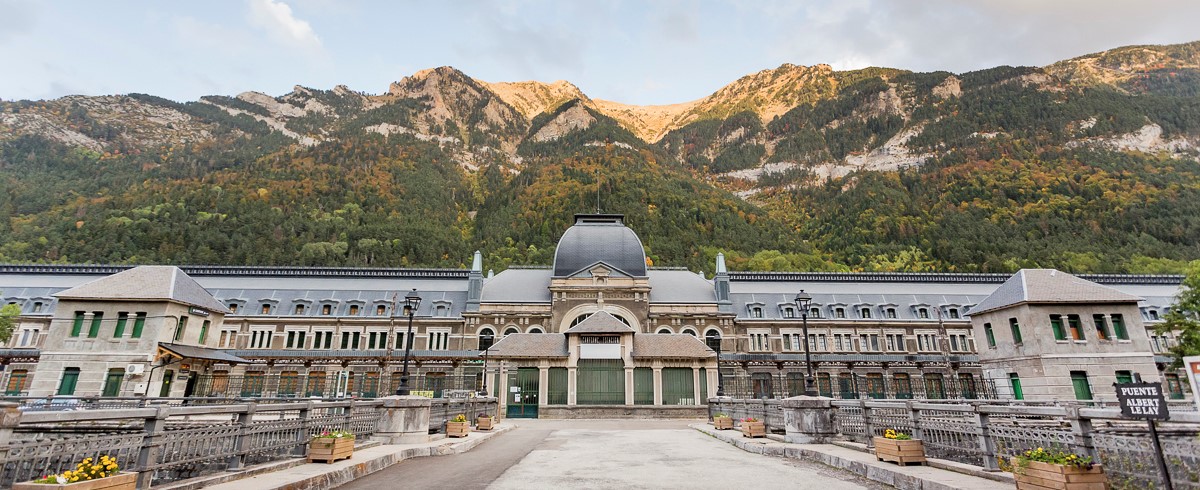
Canfranc Train Station
Surprisingly elegant, it was inaugurated in 1928 by King Alfonso XIII, and is a very beautiful example of industrial architecture…
Day 7 Western valleys and Tena valley
Being in the capital of Jaques, we cannot miss the valleys of Ansó and Hecho, in the westernmost part of the Aragonese Pyrenees. An infinite number of hiking possibilities await us in the Zuriza Valley or the Selva de Oza and beautiful villas, a model of the Pyrenean popular architecture, nestled in the mountains.
And of course, the contiguous valley of Tena, with the reservoirs of Lanuza and Búbal and the localities of Lanuza, Sallent de Gállego or Biescas. If you are a lover of winter sports in Formigal-Panticosa you have the largest ski destination in Spain.
Even with one more day of stay in the area, we could move in little more than one hour trip from Jaca to the high Five Villas. Well worth the visit to the native town of Fernando II of Aragon; Sos del Rey Católico, which together with its neighbor Uncastillo, gather a wide wealth of Romanesque heritage among its charms.
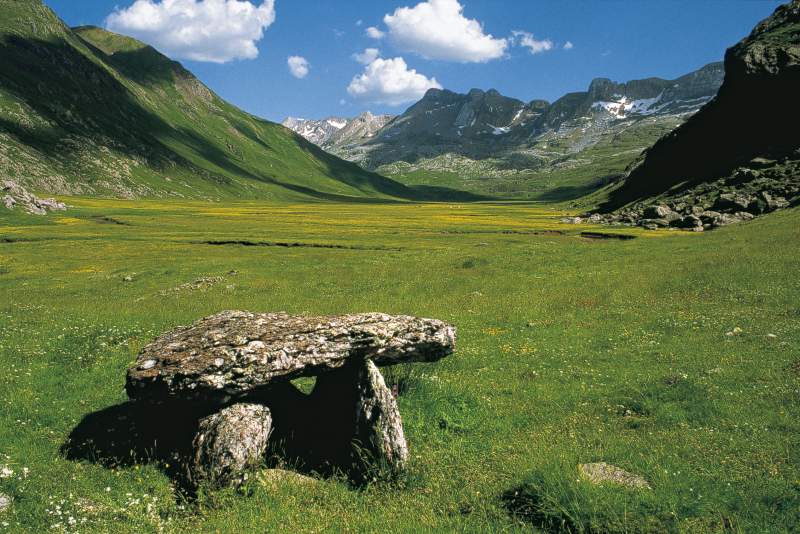
Hecho and Ansó valleys
If you are looking for 100% nature, charming traditional villages and the chance to practice sport in a remarkable frame,…
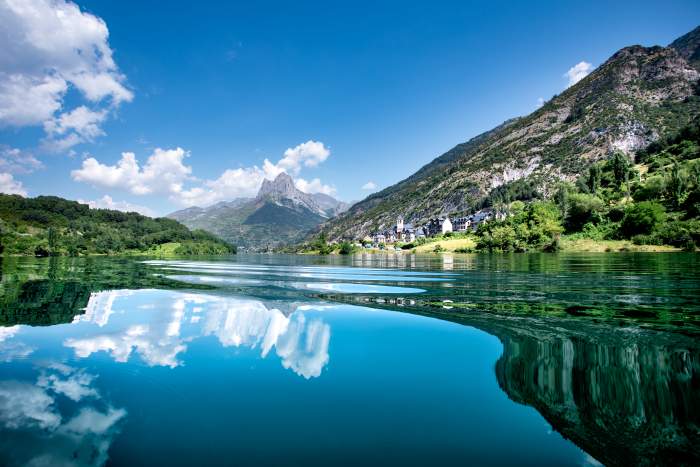
Tena Valley
Ascending landscapes up to 3,000 metres high, villages full of charm and a first class entertaining offer
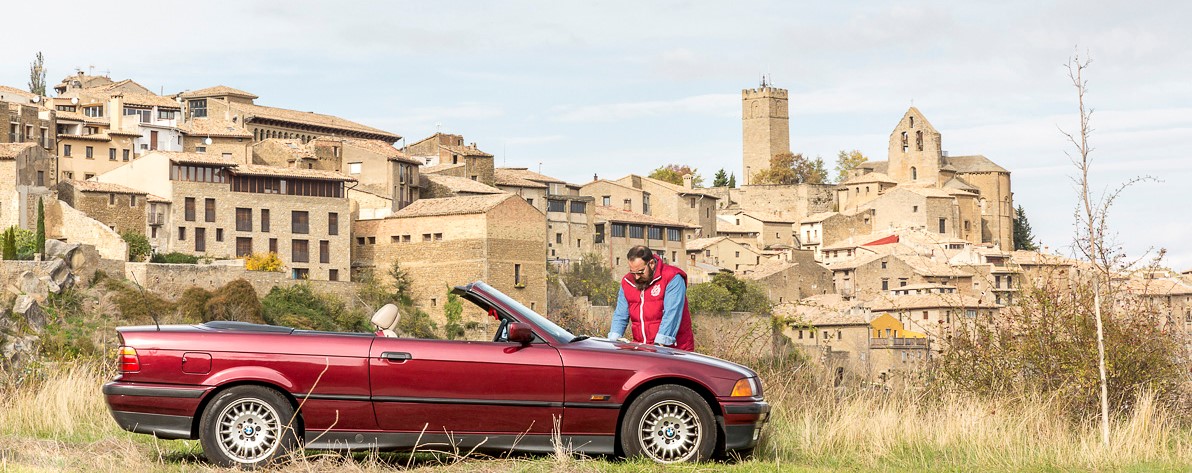
Sos del Rey Católico
Hometown to King ‘Fernando el Católico’, it stands on a hill and meant, a long time ago, an important border…
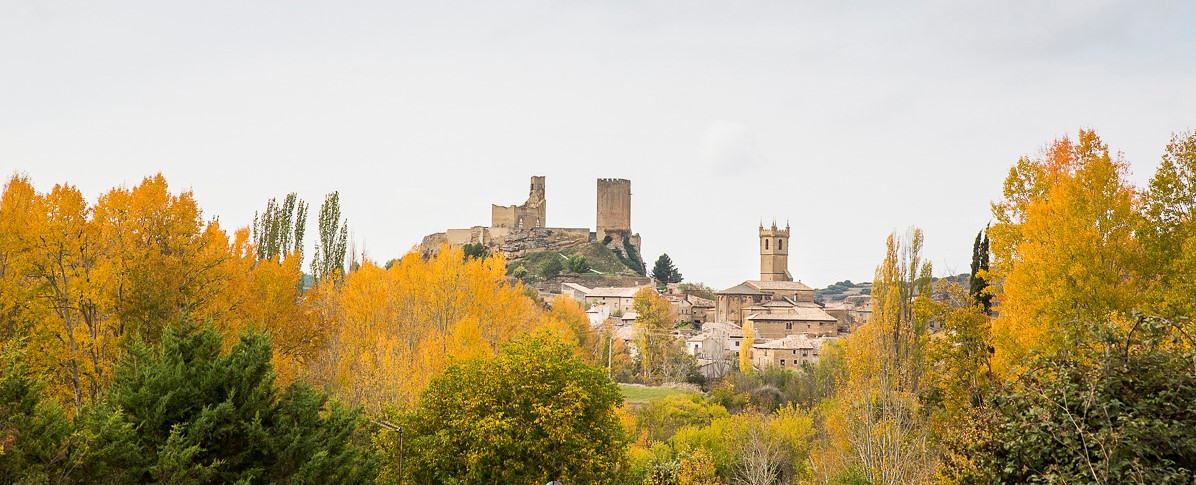
Uncastillo
Crowned by the fortress which baptized the village, Uncastillo hosts several Romanesque churches and an extraordinary artistic heritage, truthful witnesses…
Day 8 Aínsa, Torla and Ordesa National Park
We arrive at Torla and we enter the beautiful National Park of Ordesa and Monte Perdido, declared World Heritage by Unesco, with more than 100 years of history and thousands of natural evolutions, the most imposing jewel of the Aragonese Pyrenees is forged. Intense hiking routes, beautiful mountain walks or impressive viewpoints to reach almost without walking, you choose how to walk the street of Ordesa, the Añisclo Canyon, the Escuaín Gorge or the Pineta Valley. And after the route, a peaceful walk through the cobbled streets of the medieval Aínsa. Rest on the benches or terraces of the Plaza Mayor and imagine the coexistence between Moors and Christians centuries ago in those same arcades, as the 'Morisma de Aínsa' tells us every two years.
If you can extend your stay, do not hesitate to reach the Benasque Valley, a natural paradise both in winter and summer, where the largest number of 3,000-meter-high peaks in the Pyrenees are grouped in the Maladeta, Posets and Retriever.
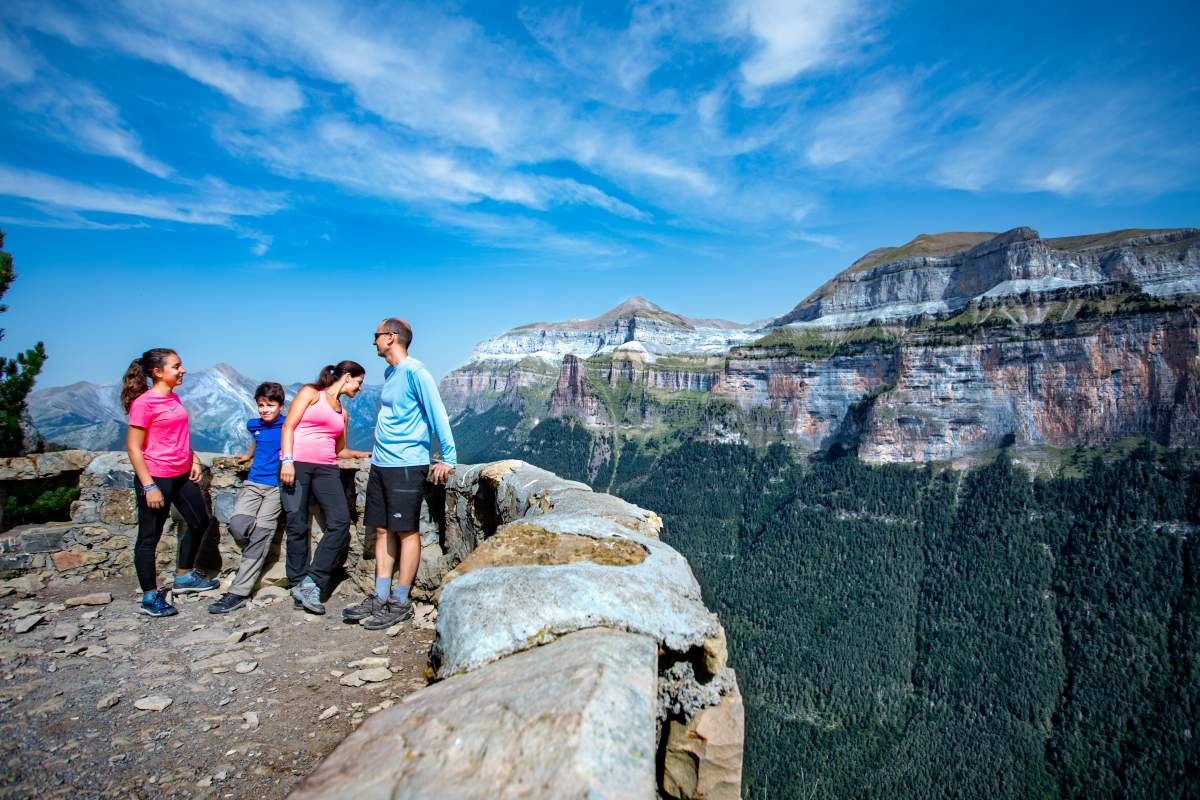
Ordesa and Monte Perdido National Park
Declared World Heritage by Unesco, Ordesa and Monte Perdido National Park hosts four valleys (Ordesa, Añisclo, Escuaín and Pineta), embracing…
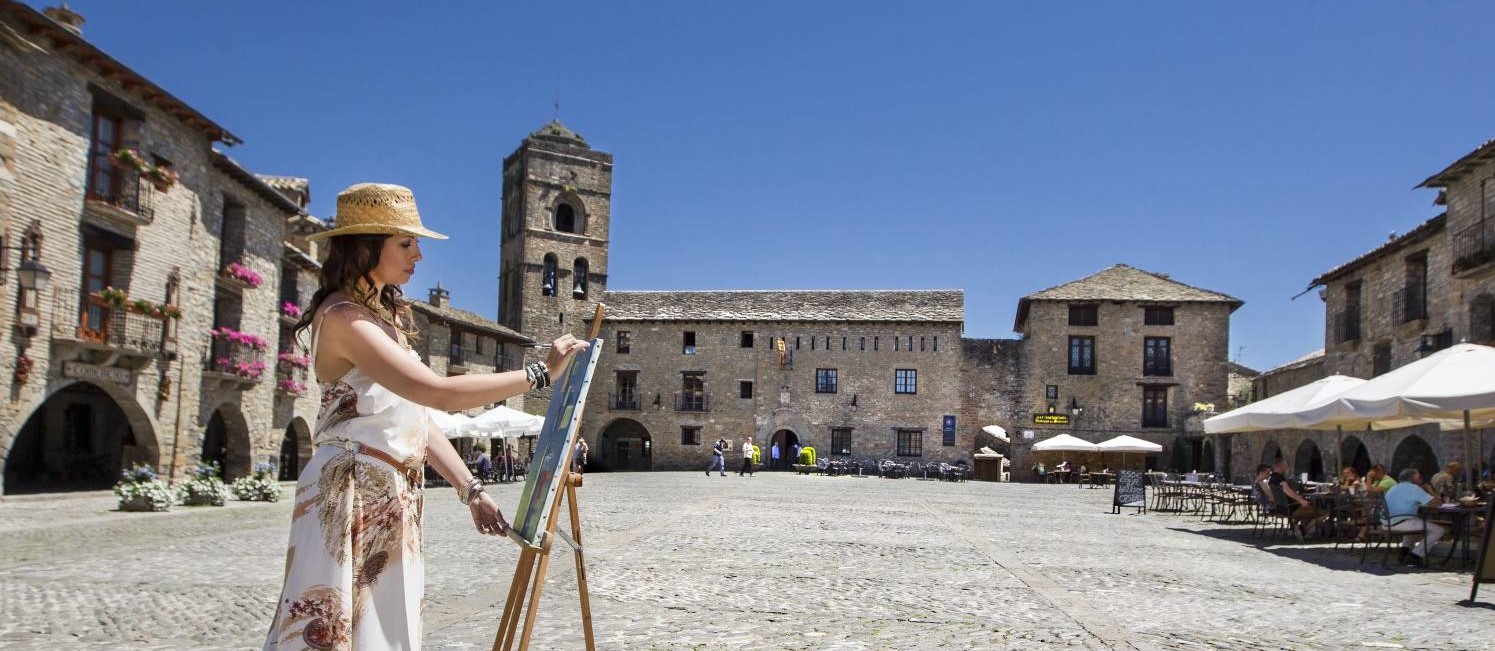
Aínsa
The village is located where rivers Ara and Cinca come together, under Peña Montañesa gazing
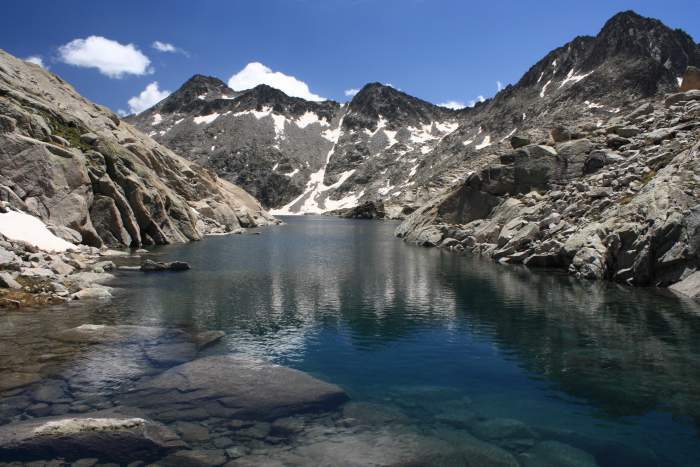
Valley of Benasque
The highest peaks in Aragón must share their fame here with glaciers and frozen lakes
Day 9 Alquézar, Sierra de Guara, Barbastro and Monzón
Practice the 'Slow driving' to enter from Aínsa in the Sierra de Guara. There awaits Alquézar, imposing medieval fortress nestled in a spectacular natural environment. Routes such as the Pasarelas del Vero will give you an idea of the beauty of the landscape. Do not hesitate to participate in any of the guided visits to the Rock Paintings of the Río Vero Cultural Park.
The route continues towards Barbastro, capital of the Somontano de Barbastro, land known for the quality of its wines. And from there we went to Monzón, recognizable in the distance by the silhouette of its imposing Templar castle.
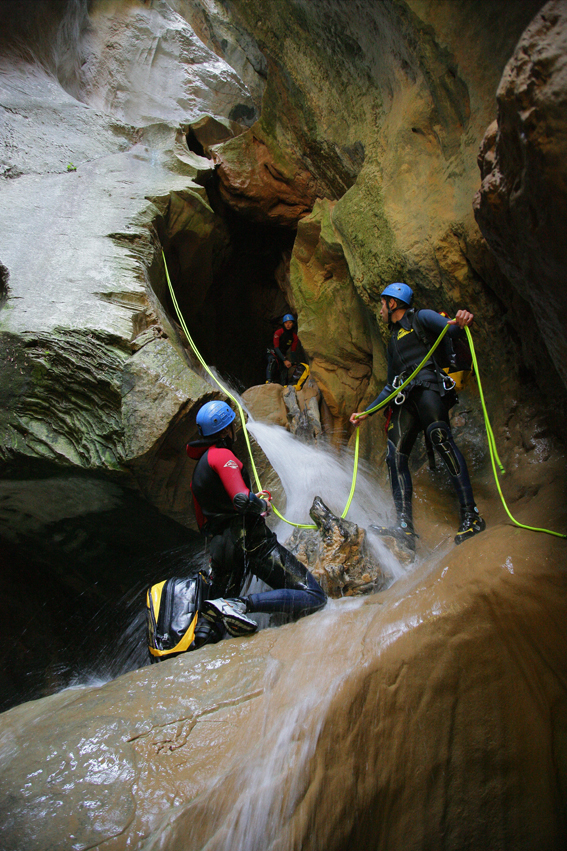
Guara Ranging Mountains
Sierra de Guara is the largest protected natural space in Aragón. The ravines, located in spectacularly beautiful spots with wild…
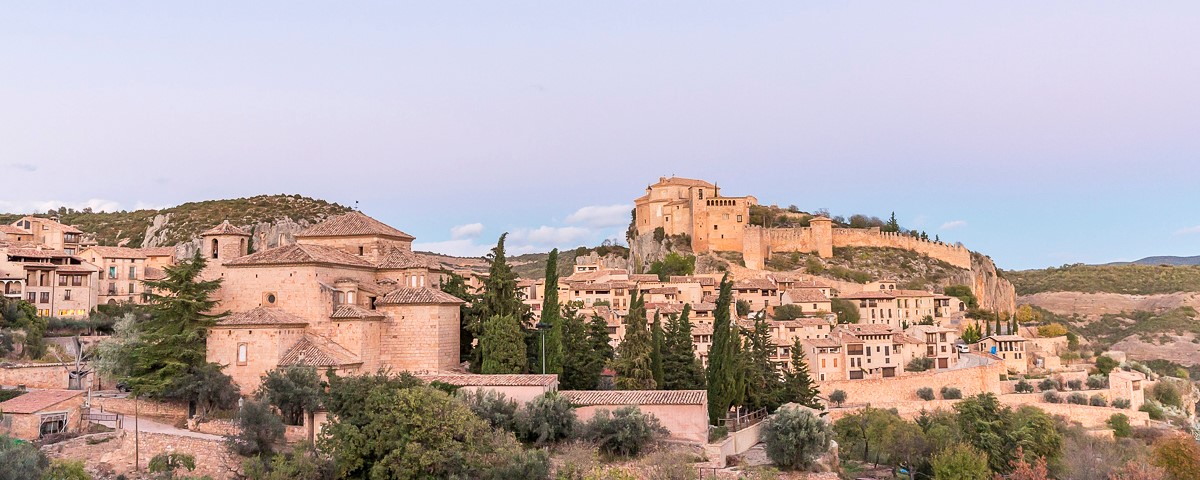
Alquézar
Declared Historic Artistic Heritage, the village of Alquézar invites you to step back in time through a relaxing promenade along…
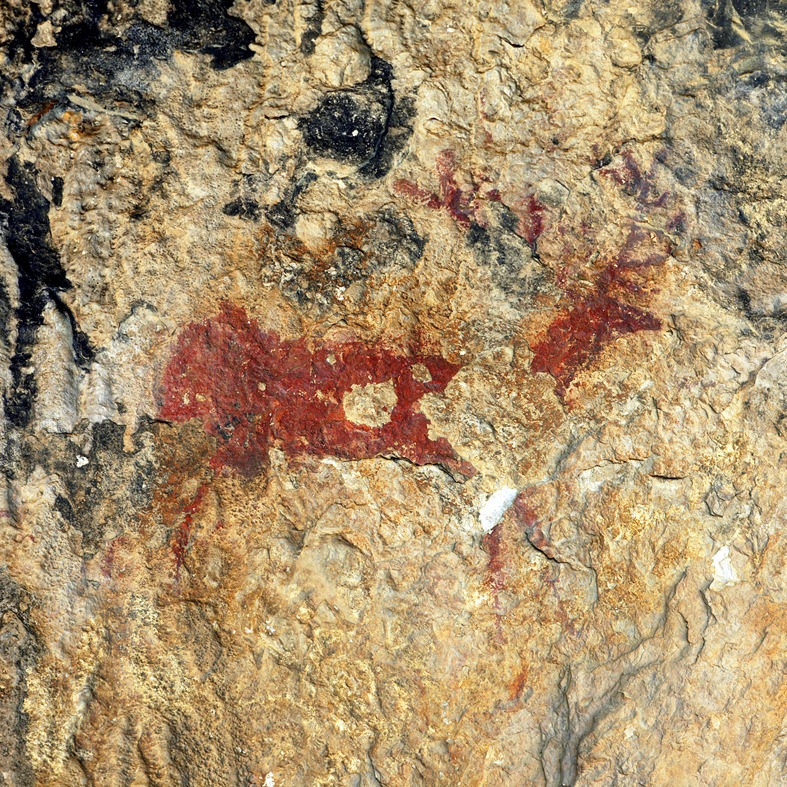
Vero River Cultural Park
Culture, sport and nature melt each other to create a unique space offering a wide range of spare time options:…
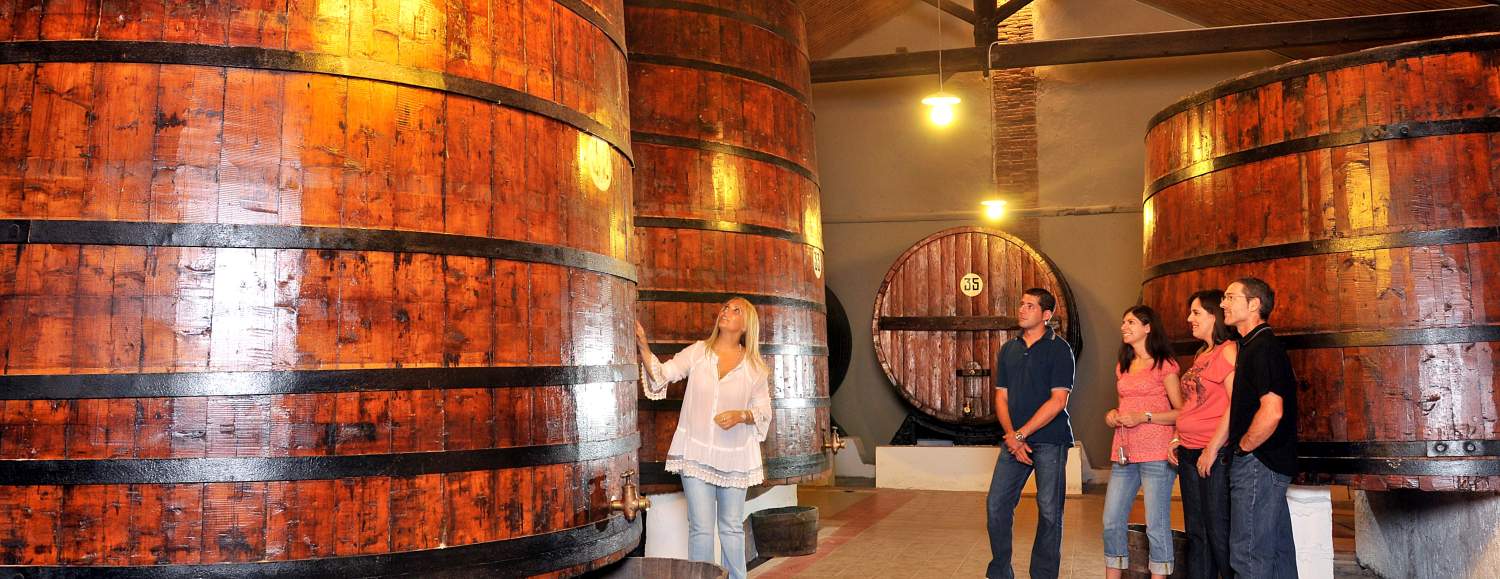
Somontano’s Wine Route
It is a transition land between Ebro valley and the Pyrenees which offers a good climate for vineyards, so grapes…
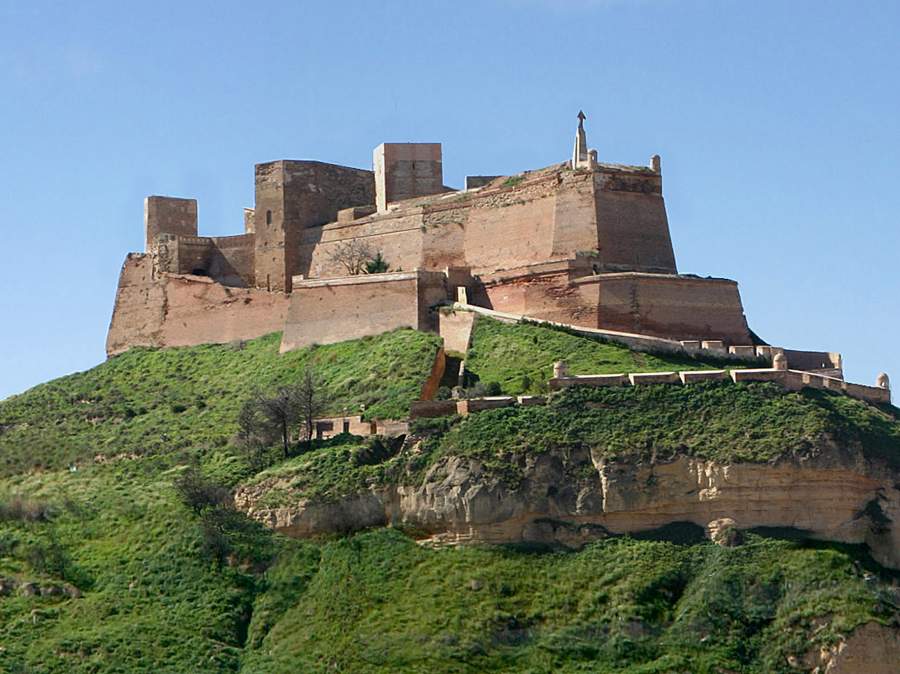
Castle of Monzón
The castle of Monzón is unique in Spain in that it saw ten centuries of continuous military history
Day 10 Monasteries of Sigena and Rueda, Alcañiz and Valderrobres
The region of the Monegros presents, among its steppe landscape, the lagoon of Sariñena, peculiar geological formations and interesting cultural enclaves such as the Cartuja de las Fuentes or the Monastery of Santa María de Sigena, both visited with guided tours on weekends. If you are interested in the history related to the Civil War, do not miss the Interpretation Center of Robres and the path of the writer Orwell.
We continue our route to the south and cross the Ebro valley to reach the Monastery of Rueda, a beautiful example of Cistercian art in Aragon that preserves all its medieval rooms and a curious Mudejar bell tower.
In 45 minutes, we arrive in Alcañiz. Stroll through its urban network, once a racing circuit, and you will discover its gothic market, its Renaissance town hall and the former collegiate church of Santa María la Mayor. If you go to the tourist office, you will see the underground passages. I recommend the ascendance to the Castle of the Calatravos that crowns the town on the hill. There may be a race today at the Motorland Speed Circuit, venue for the Moto GP World Championship each year. Shall we check it out?
In half an hour we are in Valderrobres, capital of Matarraña, a region known as ‘La Toscana Aragoneza,’ which hides true natural and artistic treasures. The monumental castle of Valderrobres, together with the church of Santa María la Mayor, is one of the most beautiful gothic complexes in all of Aragon.
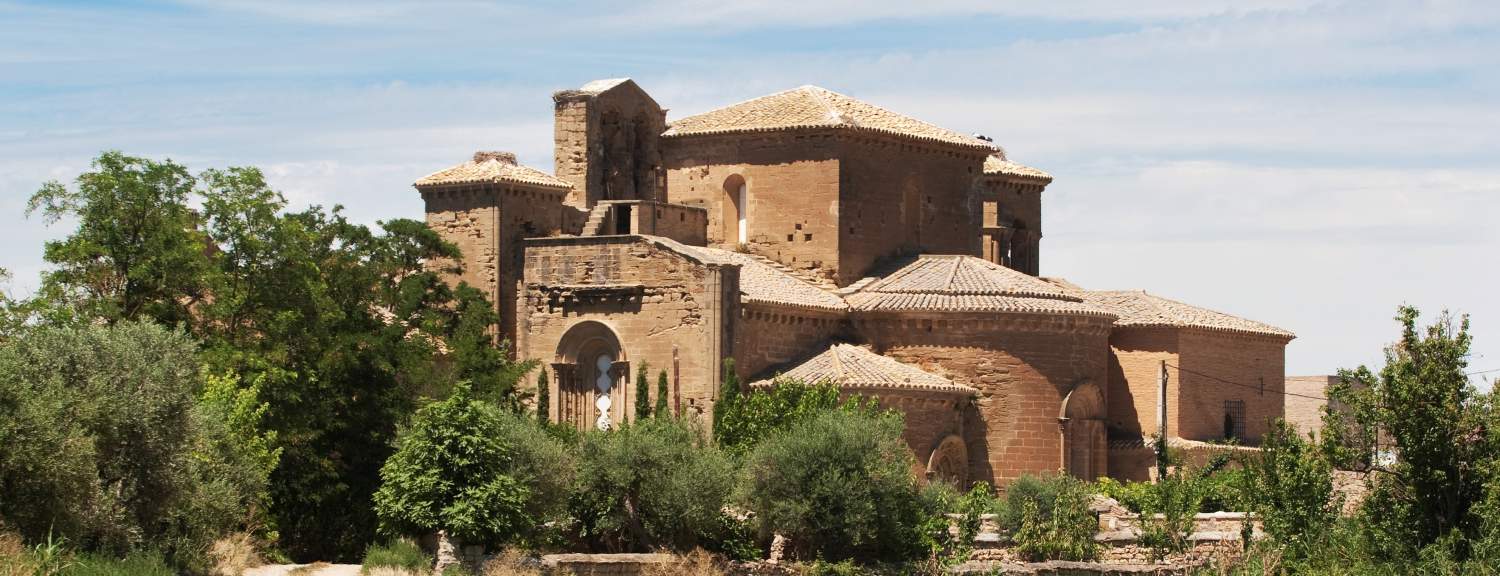
Sijena Monastery
It sheltered inside its walls Queens, princesses and noble families’ daughters. Queen Sancha herself stayed permanently in it when she…
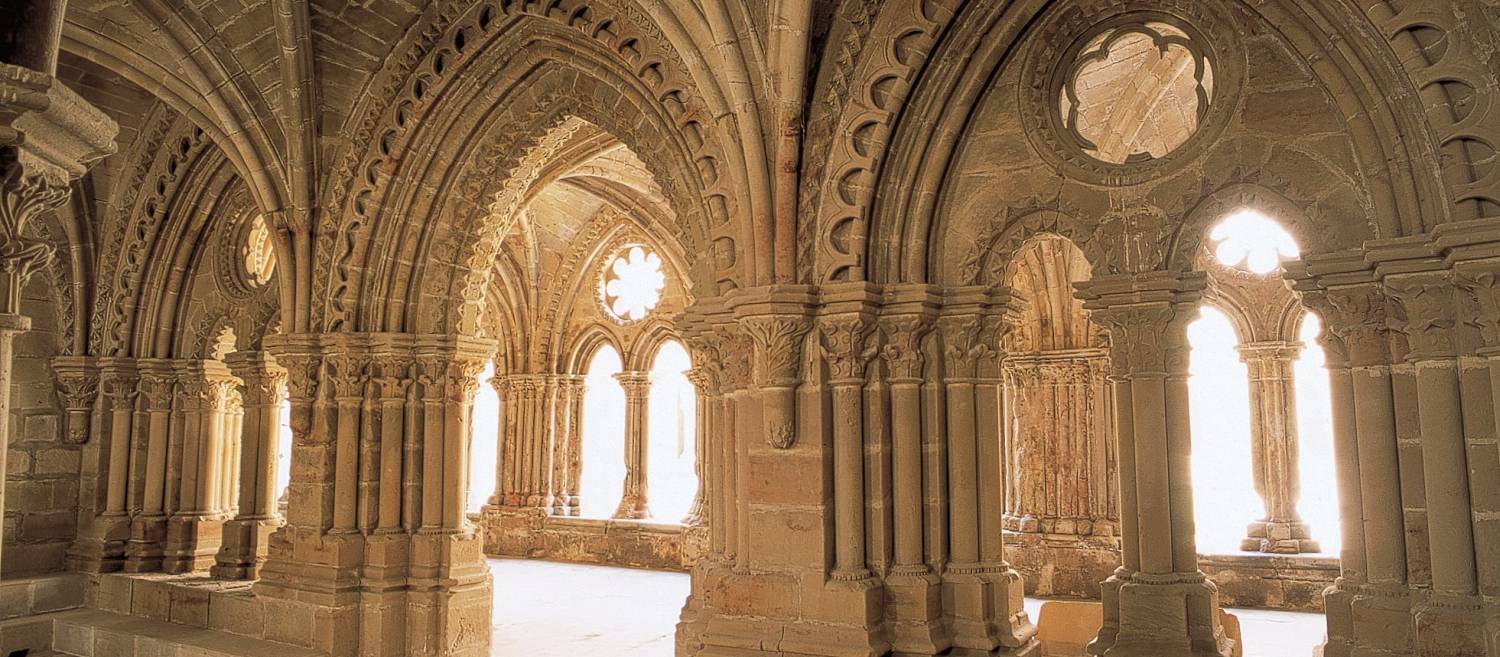
Monastery of Rueda
Its building works started around year 1022, but we must step back in time to find the Cister Order origin…
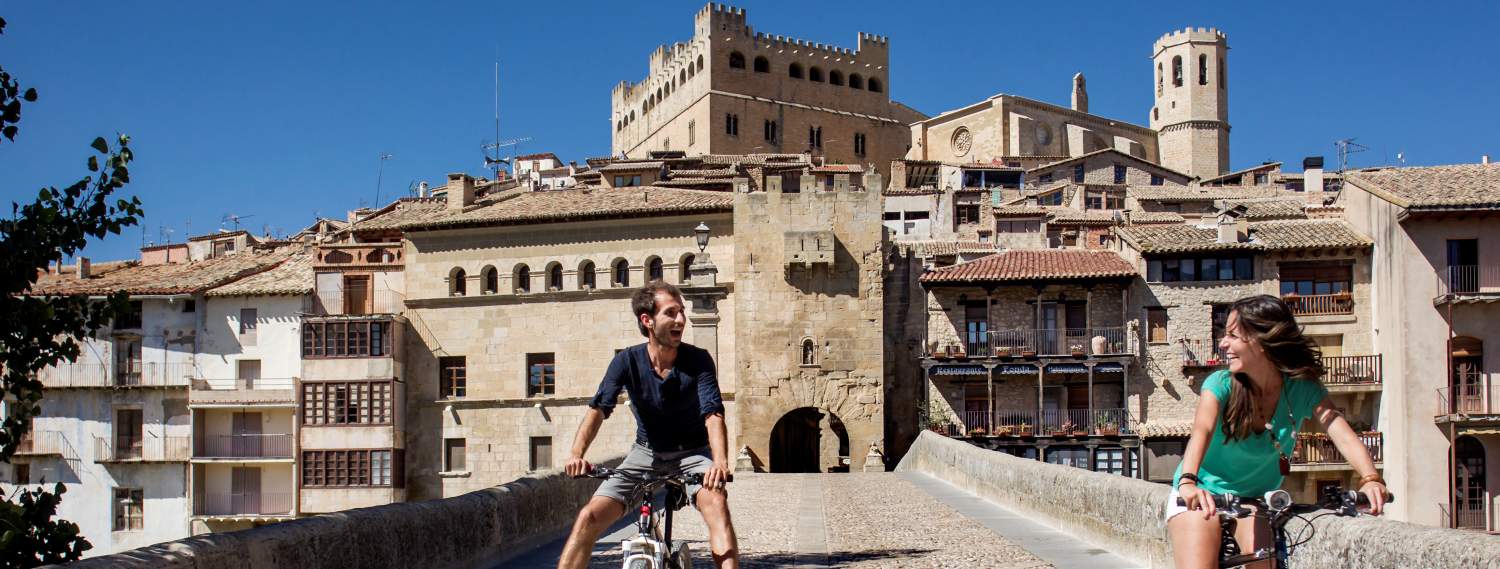
Valderrobres
Valderrobres is crowned by a monumental castle, connected to the gothic church ‘Santa María la Mayor’
Day 11 Mirambel, Cantavieja and the Iglesuela del Cid
We are heading today to the Maestrazgo region, one of the few places where you can enjoy the silence and quiet life that its charming villages keep.
Enter, through the Portal de las Monjas, in the walled enclosure of Mirambel, declared Europa Nostra Restoration Prize. Walk through the urban area without losing detail of the lattices and its town hall. Cantavieja stands on top of a steep rock. Its historic center, also declared an Asset of Cultural Interest, has one of the most complete monumental collections of the Aragonese Gothic. The next stop is La Iglesuela del Cid. You will be surprised by the beauty of the many palaces and Renaissance mansions that you will see in every corner.
Day 12 Mora de Rubielos and Rubielos de Mora
In Mora de Rubielos you will be struck by the grandeur of its castle, one of the best preserved in Aragon. The other great treasure is his excolegiata de Santa María, in Gothic style.
Meanwhile, Rubielos de Mora, with its wall, houses, courtyards ... offers one of the most attractive urban areas of the province. Its careful restoration made it worthy of the Europa Nostra prize. It is also interesting, especially if you go with children, make a visit to Amber Region, the sub-office of Territorio Dinópolis in the locality.
If you love skiing, the resorts of Javalambre and Valdelinares offer you their modern facilities for practicing of white sports. The sky clear and free of light pollution of the mountains of Gúdar and Javalambre south of Teruel, will allow you to see the stars. So here we are going to spend the night.
Day 13 Teruel
In the city of lovers, it is easy to fall in love with their art. The beautiful medieval ensemble of its historic center is dotted with Mudejar everywhere. This artistic style declared a World Heritage Site by UNESCO permeates its towers and its cathedral. But to understand the famous legend, you have to contemplate the Mausoleum of the Lovers and, better yet, visit Teruel in February, during the celebration of 'Las Bodas de Isabel'.
Reserve time for Dinópolis. Its Paleontological Museum and its modern attractions will catch you in the exciting world of dinosaurs.
Day 14 Albarracín, Peracense and Gallocanta
Start the day with energy to discover one of the most beautiful villages in Spain: Albarracín. Its walled enclosure, the steep streets of the urban nucleus, its Cathedral and the popular architecture make it a picturesque and unique place. The Sierra de Albarracín hides magical places of exuberant nature. It is worth going into the Protected Landscape of the Rodeno Pine Trees and admiring the Rock Paintings in the Cultural Park of Albarracín.
The reddish environment that characterizes this landscape also accompanies us in the Peracense Castle, built in Rodena stone and camouflaged with the land on which it sits.
We continue exploring Aragonese lands in a northerly direction and arrive at the ornithological enclave par excellence: the lagoon of Gallocanta. Natural habitat of diverse species of birds, especially hosts cranes in their migratory routes that can be seen hundreds of November to February.
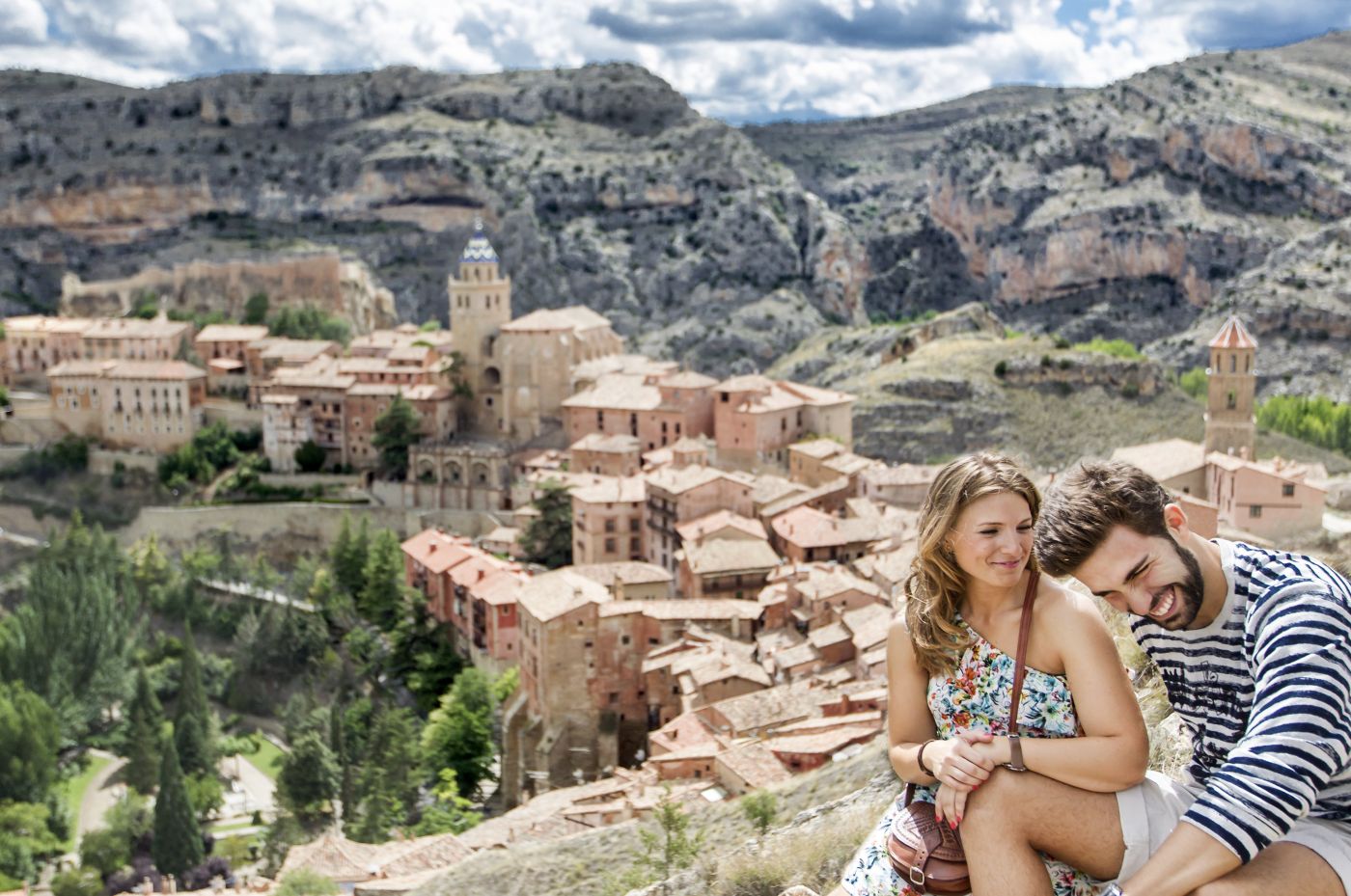
Albarracín
Albarracín is a unique place. Taking promenades along this town, walking along the city wall and stepping into its monuments…
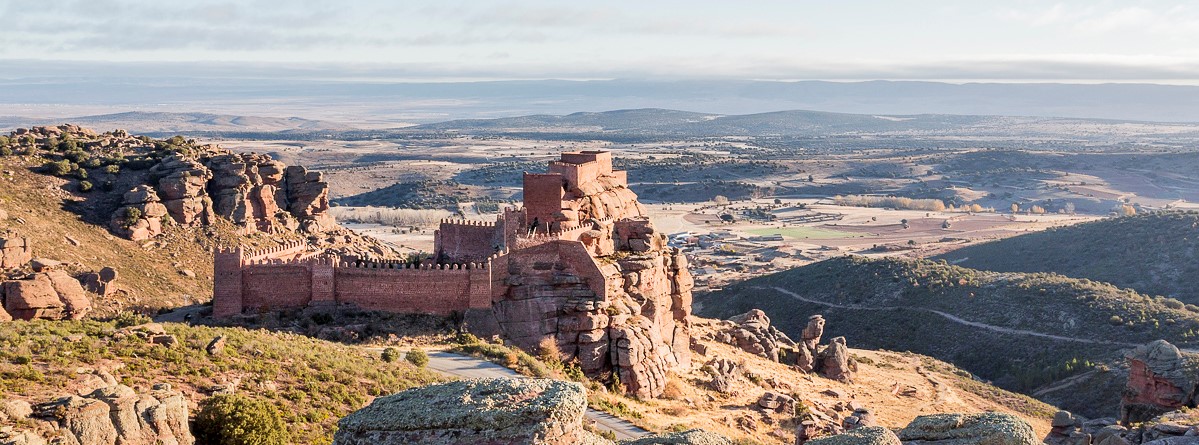
Peracense castle
Peracense castle is one the most beautiful and impressive in Aragón. It was built on the top of a rock…
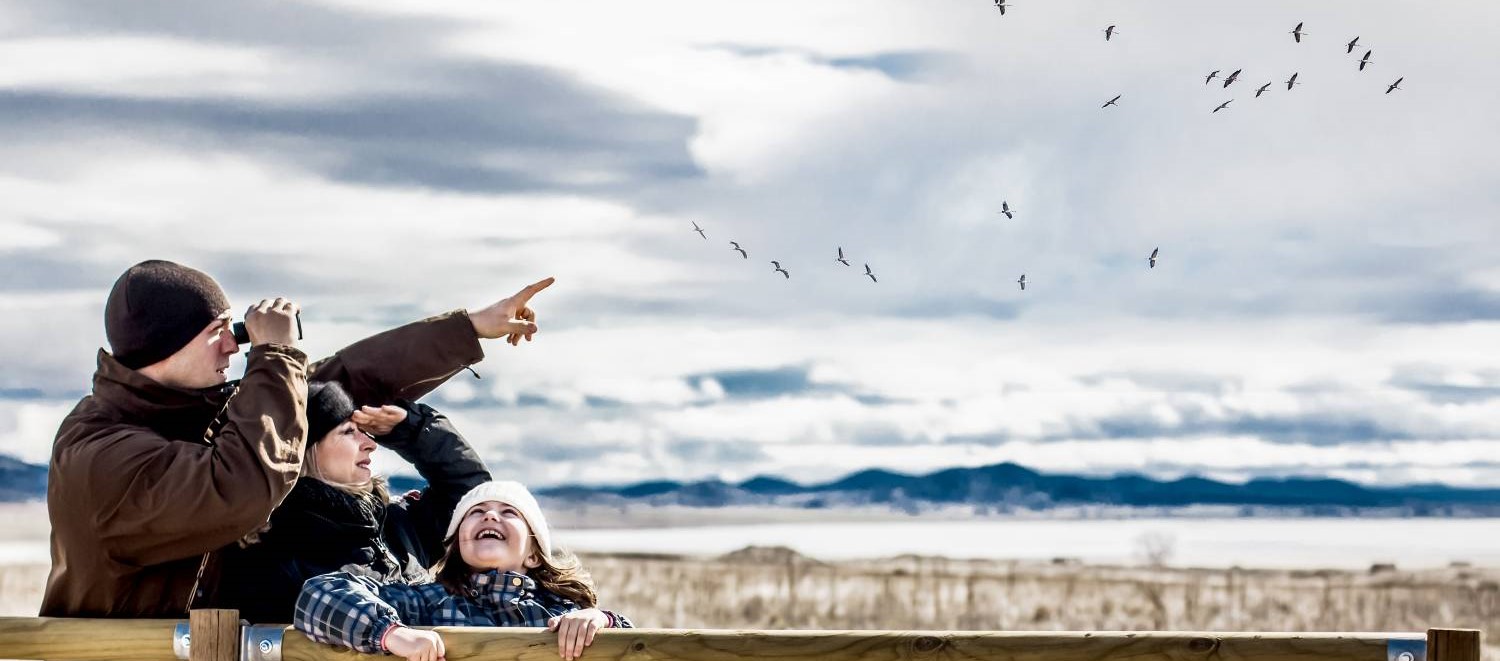
Gallocanta pool
This beautiful enclave is famous for being a real paradise for birds. Every Winter, it is the chosen location by…
Day 15 Cariñena, Fuendetodos and Belchite
In the Domains of Campo de Cariñena, the vineyards that produce the famous wines with designation of origin that you can taste in one of their cellars are bred. Exceptional is the ceramics created by the artisans of Muel, whose colors and quality give it worldwide fame.
Next is the birthplace of the great Aragonese painter Francisco de Goya. In Fuendetodos you can visit his home and the Museum of Engraving, with the four complete series of the artist. Book your guided tour of the Old Town at the Belchite tourist office (or on its website). Through its ruins and its abandoned streets, you will feel the history of one of the most shocking episodes of the Civil War.
We returned to the Aragonese capital and we have reached the end of our route, but the trip does not end here, you have certainly left behind surprising places that you want to enjoy again. You are full of experiences and we are looking forward to you for more. We will wait for you.
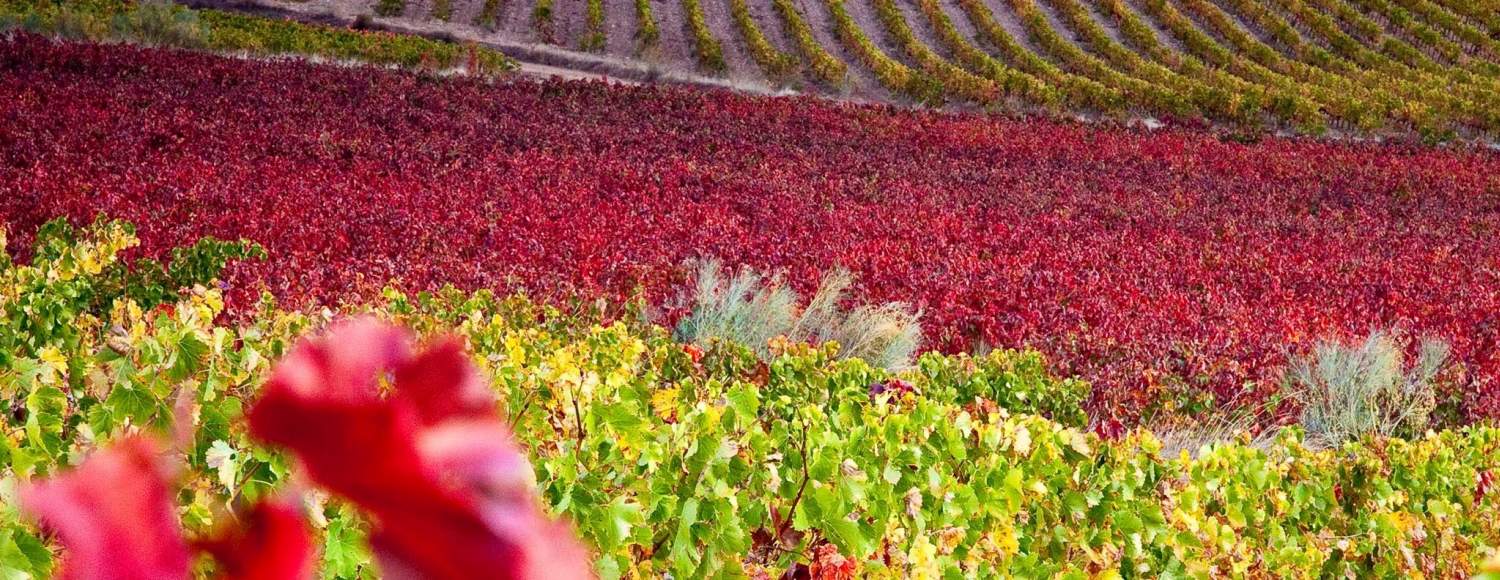
Cariñena’s Wine Route
Wine tradition in this land is deep-rooted, as Romans loved these wines. Visiting Cariñena during Vintage Celebrations will let you…
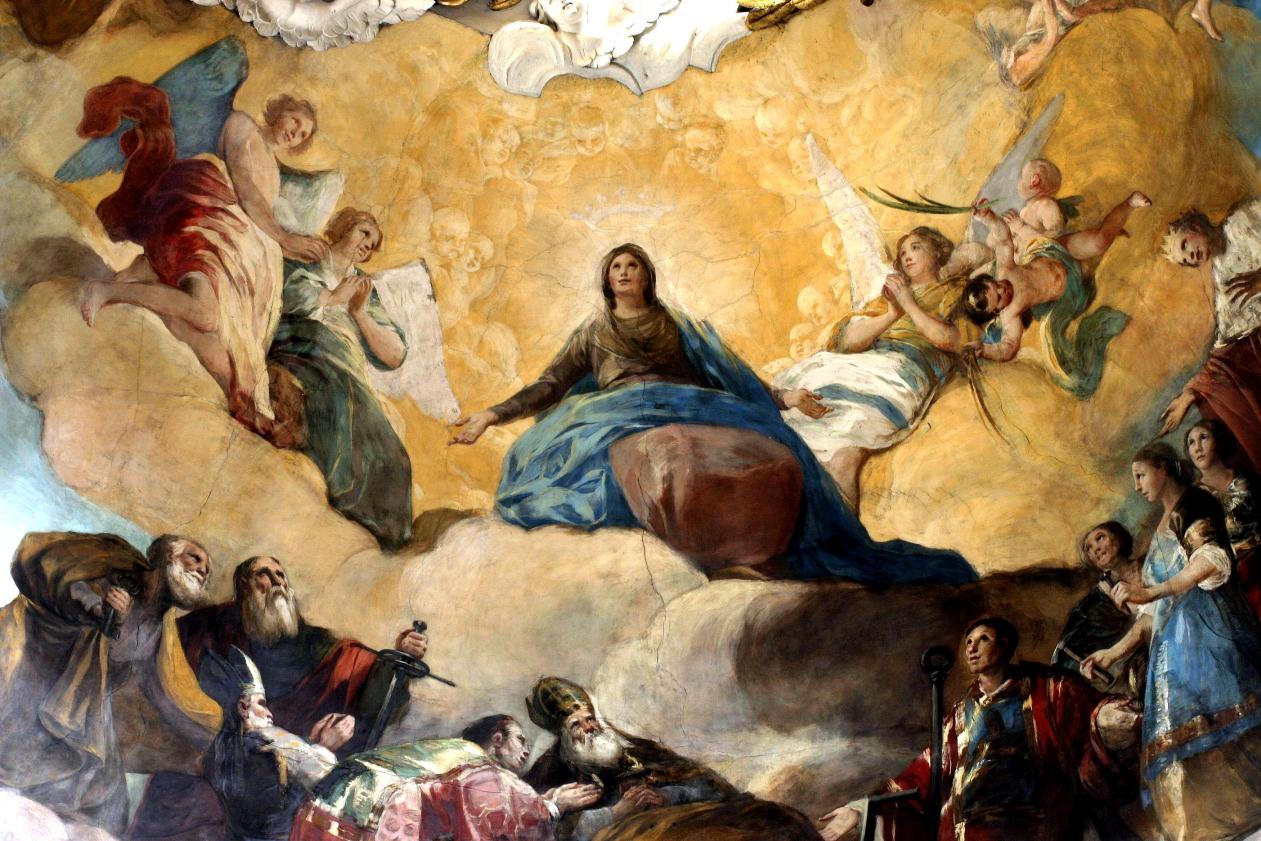
Goya in Aragon
We invite you to visit his origins and his legacy in this land. Come over his home place in Fuendetodos,…
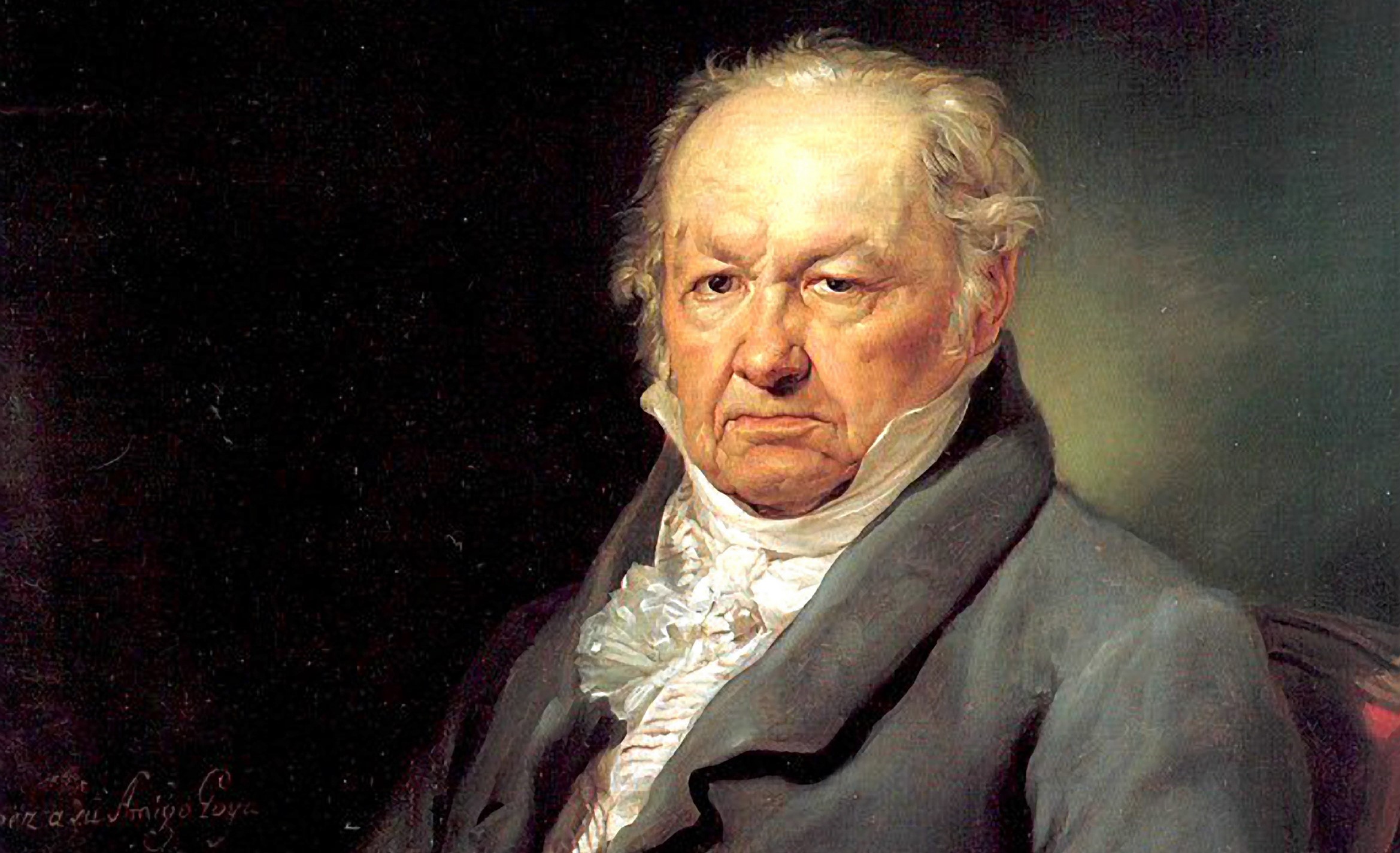
Fuendetodos
Goya has made world wide famous Fuendetodos. A visit to the village, around 50 km from Saragossa city, will let…
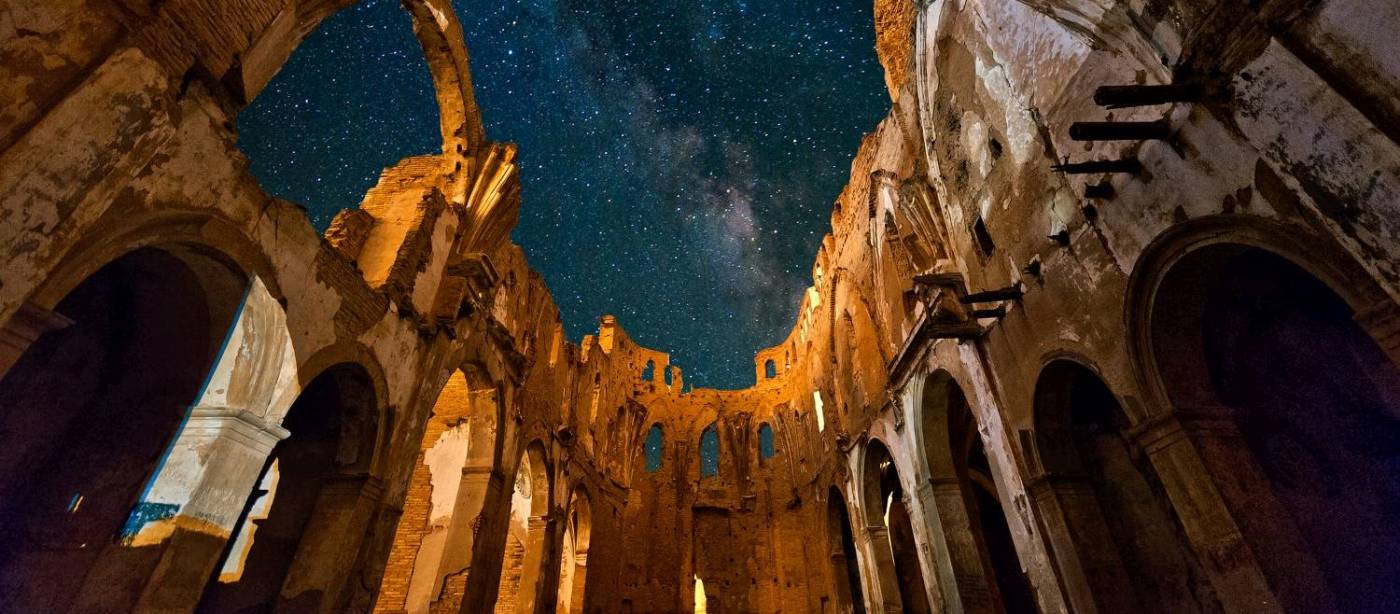
Belchite
Right beside the new town, famous old town is still standing, in ruins since it was bombed and wiped out…

